"Movement, One" is a multi-platform audiovisual artwork, combining animation, dance, spoken word and visual arts.
Everything moves. I, moving, make pixels move, animated. One elongated movement, expanding from an opening eye into trees branching, fluid spiralling, planets and eggs coalescing and shattering. One ubiquitous movement, gesture of time bursting forth into tendril-like thoughts and excitable webs. One single line, twelve times, in one continuous dance.
Final Animation:
Videos of the Performance:

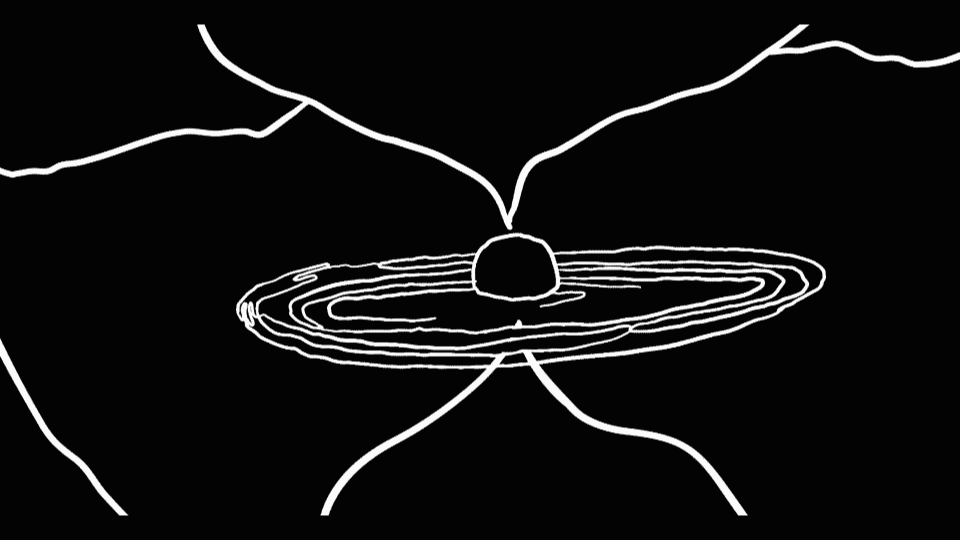
Snippets from the live performance.
The following is a collection of sketches, drawings, storyboards, concept maps, streams of consciousness, poems and exquisite corpses that have been an essential part of the creative process that lead to the animation. They are accompanied by stills, which serve as evidence of the visual relationships between the final creation and the thought processes behind them. Each section also includes a brief prose poem, which reveals the link between the images and motifs chosen, and evidences the connections amongst them all. I have included a Pinterest board with a broad range of images that have served as inspiration.
It begins with an eye: the subjective self, I. observing the world from the solipsist prison of being human.
Vision is like a tree. Around the iris, that darkest of holes upon the cranium, red roots branch upon the spherical orb. Upon opening the eyes, vision blooms into the world, funneling the vibrant light reflected into the porous retina. Photosynthetic, the cones within the eye entrap the photons, configuring this apparent reality of modulating hues. We learn to encode meaning from the otherwise chaotic mess of colors that the world could be, left alone, no seeing eye. This thing that is being human is borne essential from the single unified phenomenon of seeing. The specific way this world presents itself to us, through these light absorbent nodes it has sculpted, evolutionary, into our skulls, is the main trunk of the shared experience of humanity.
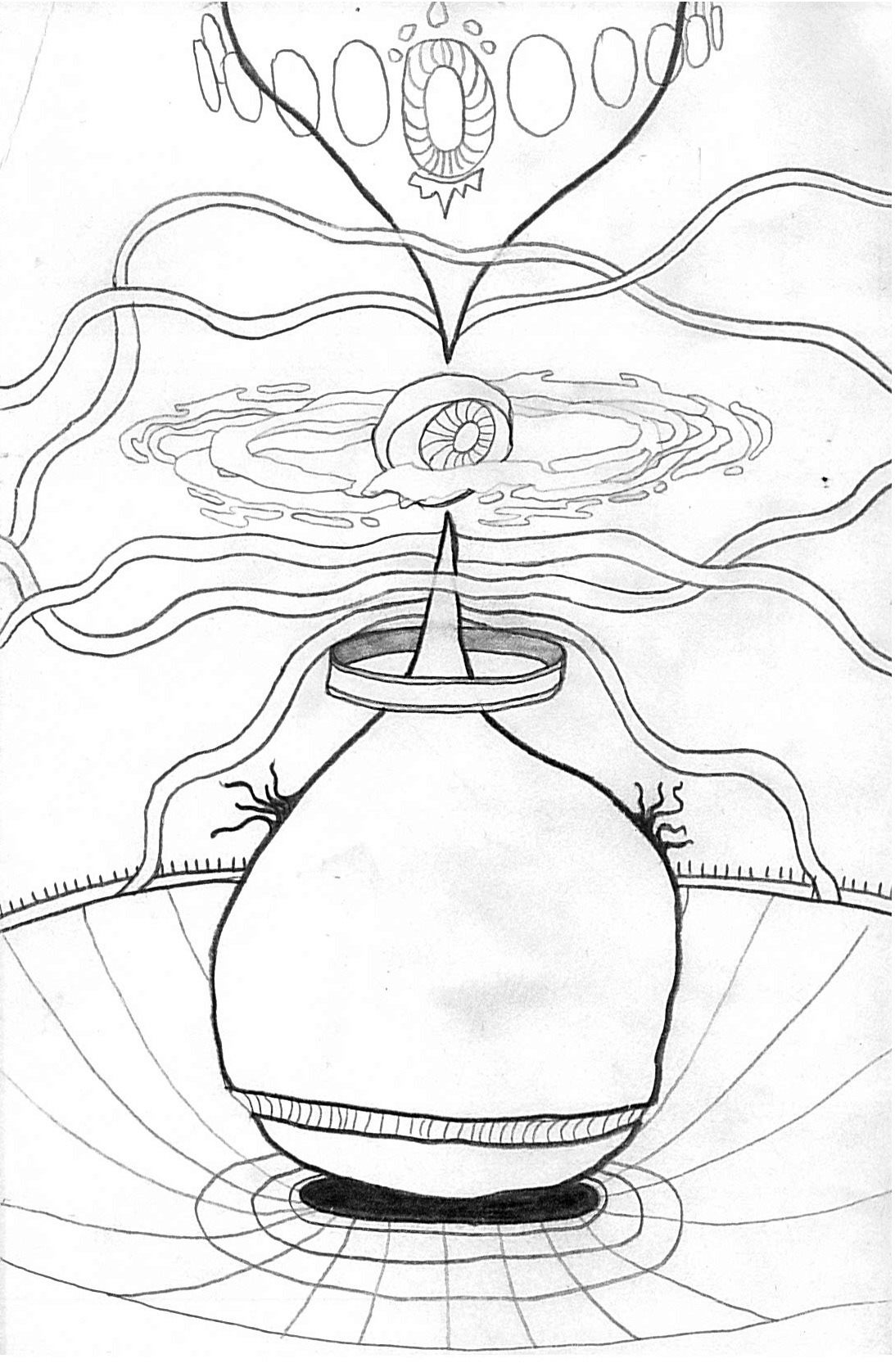
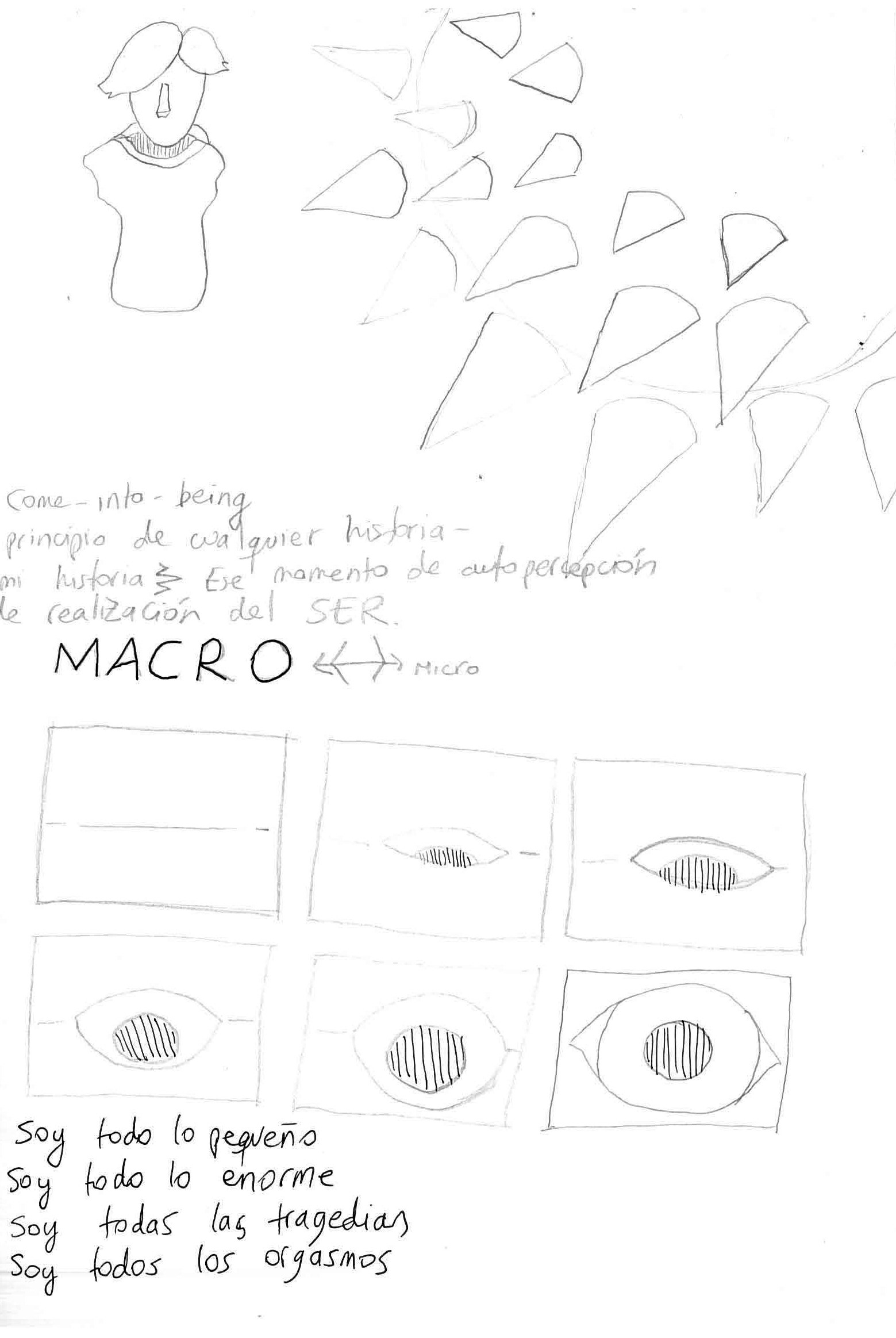
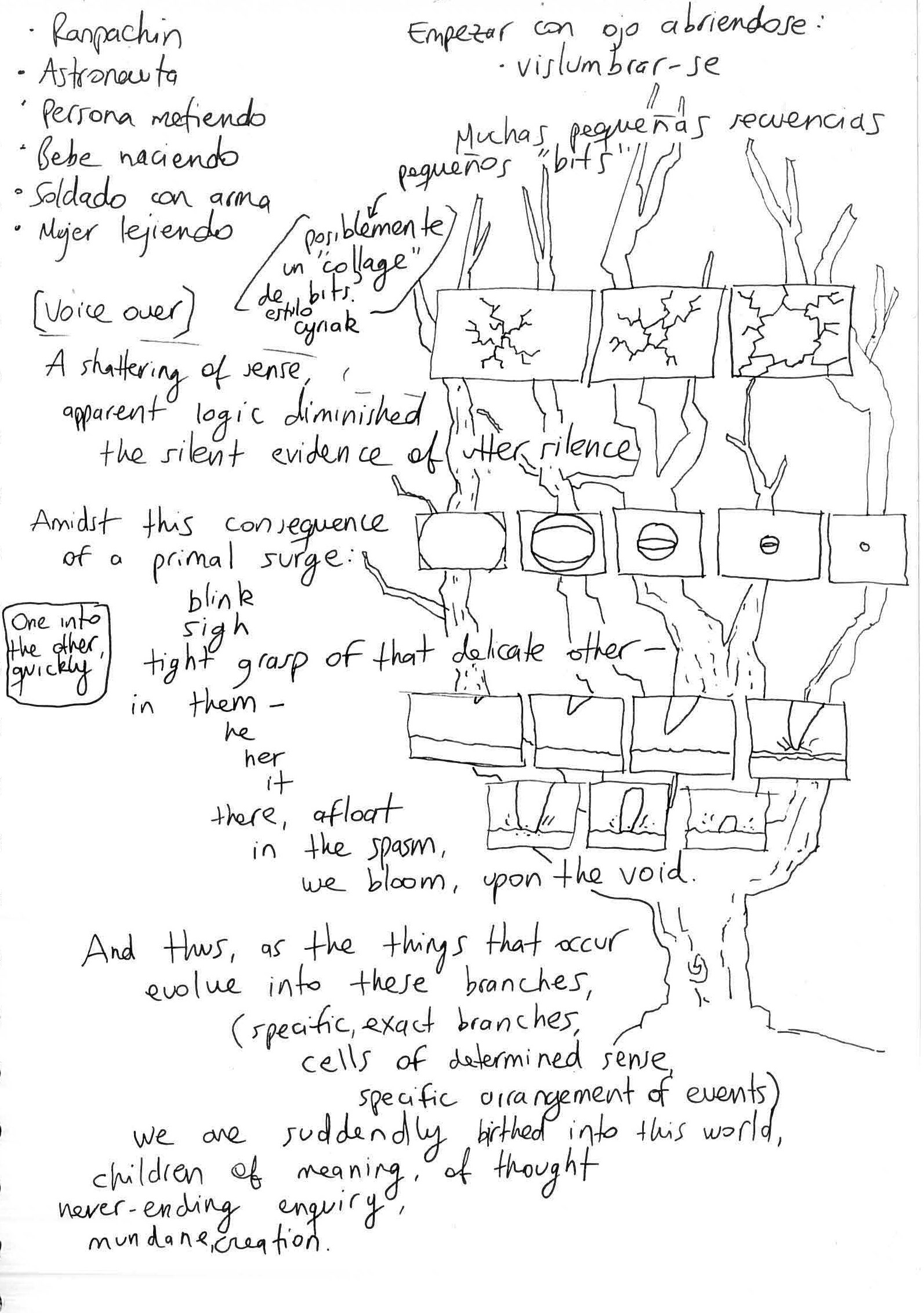

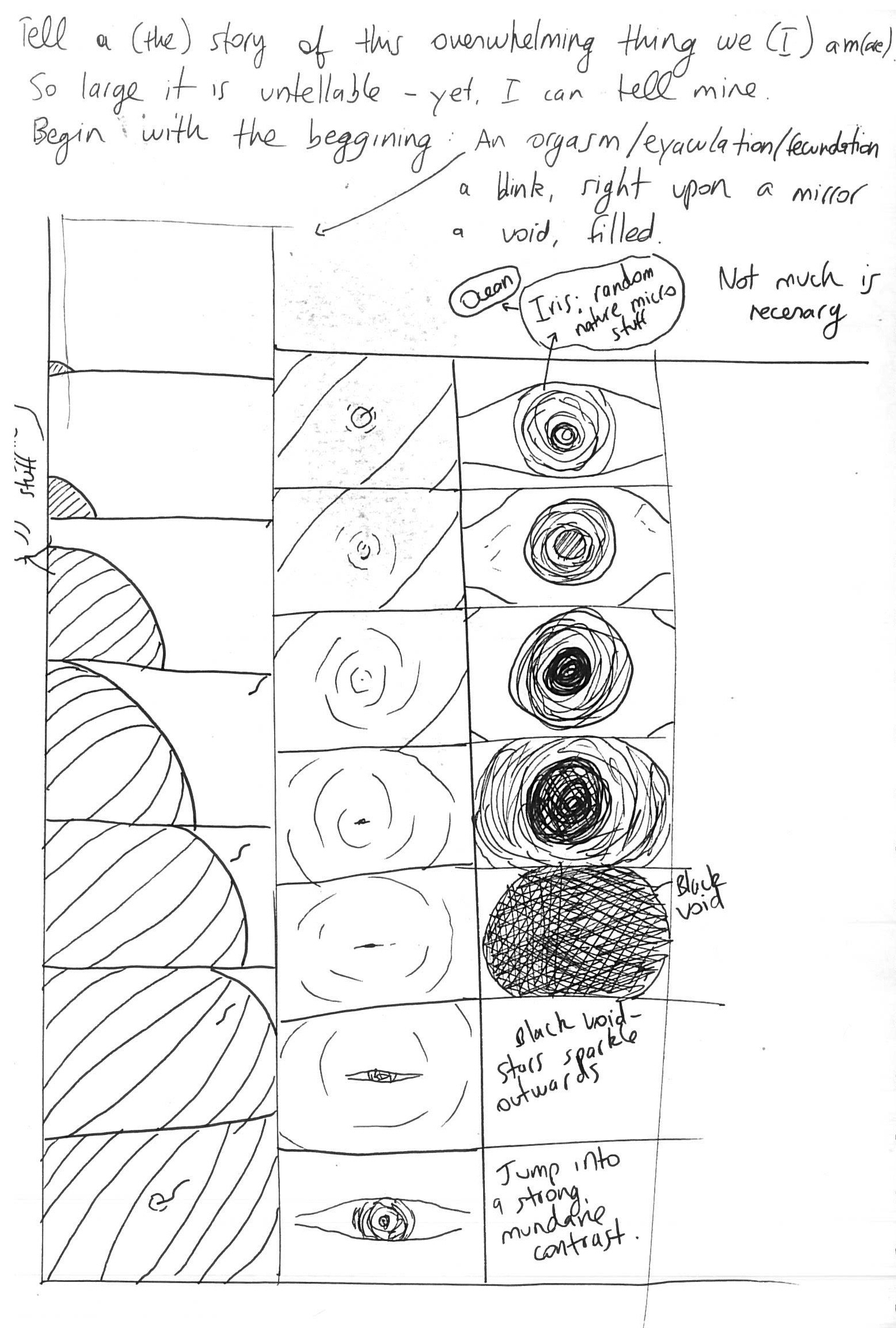
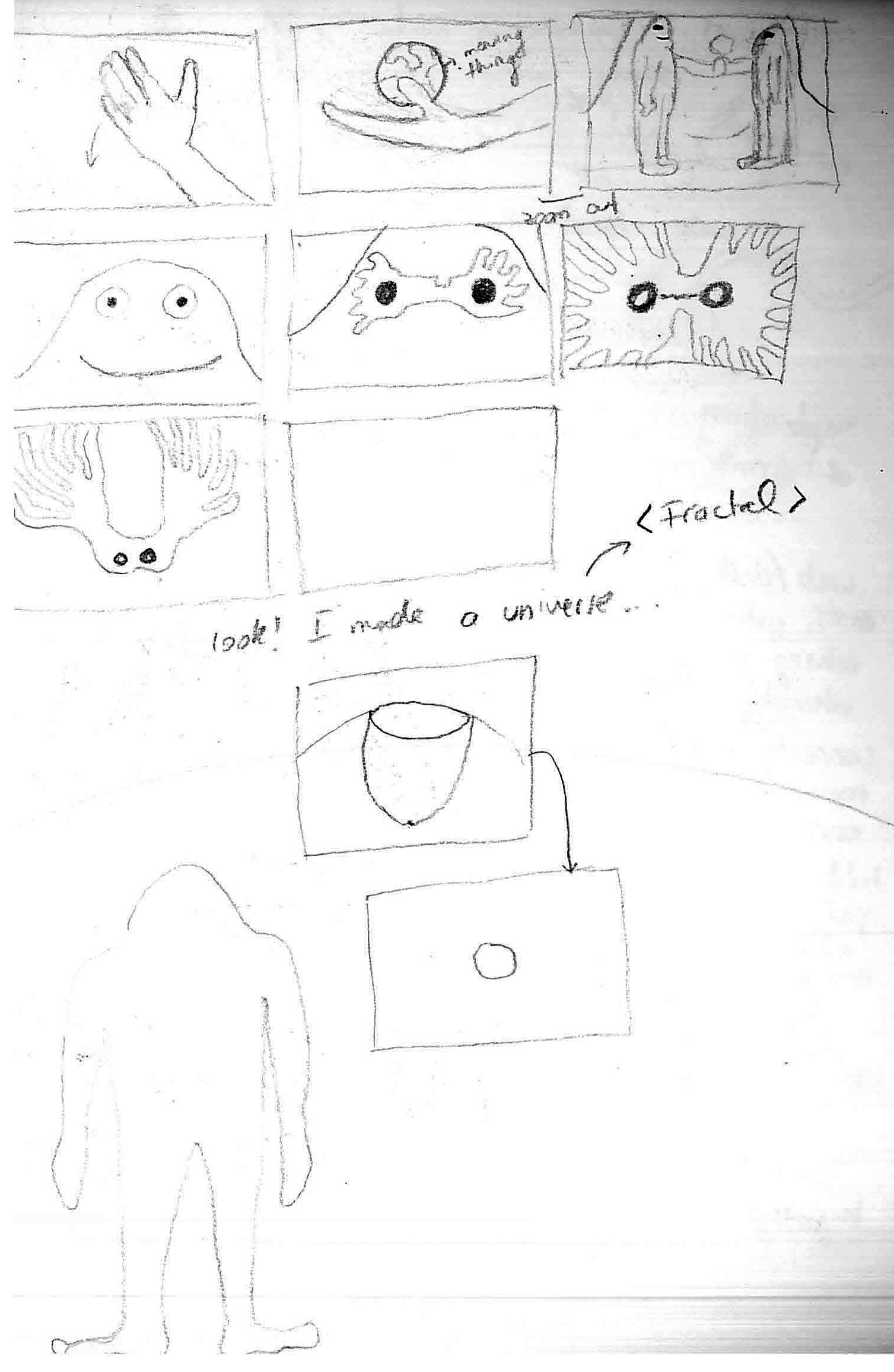
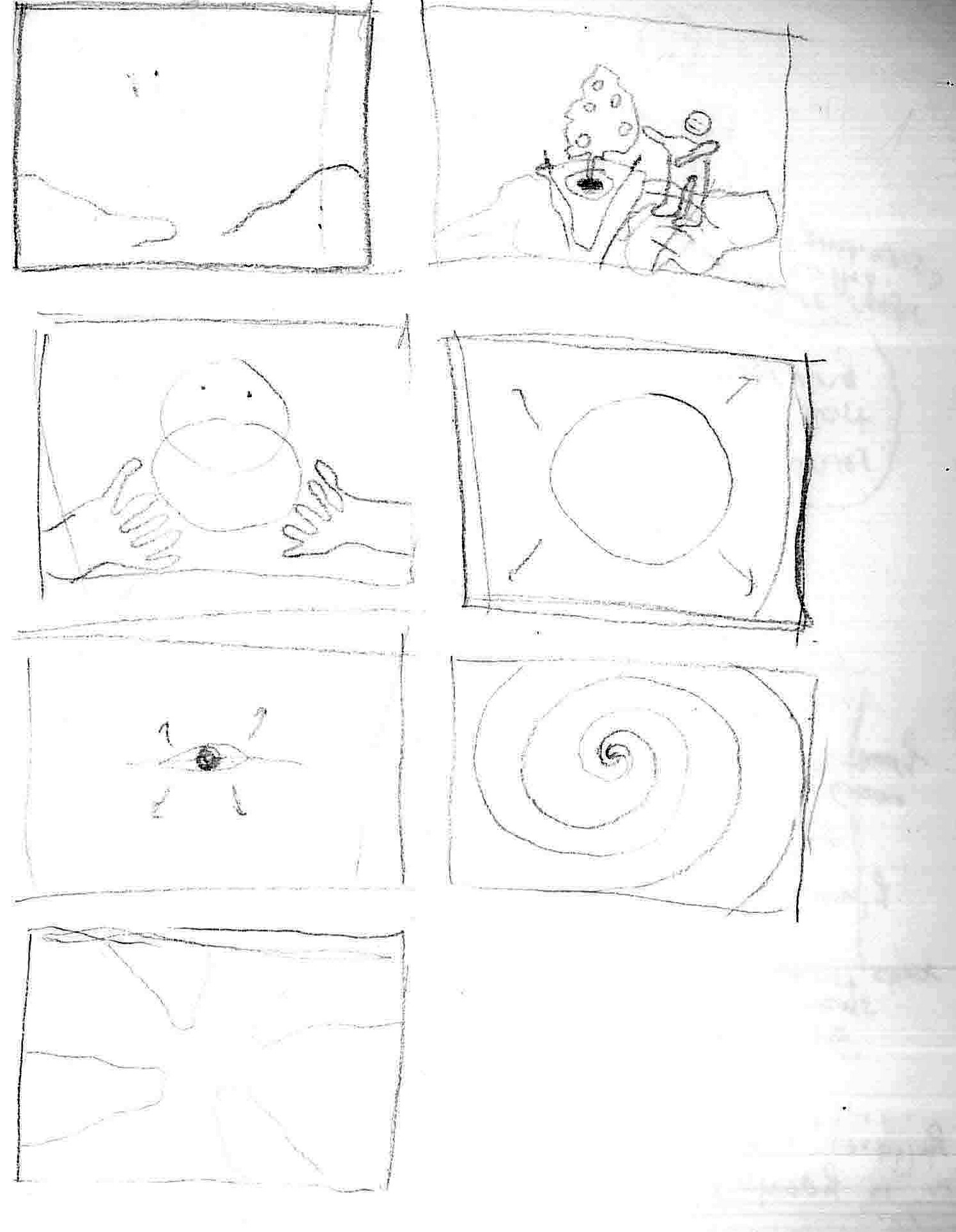
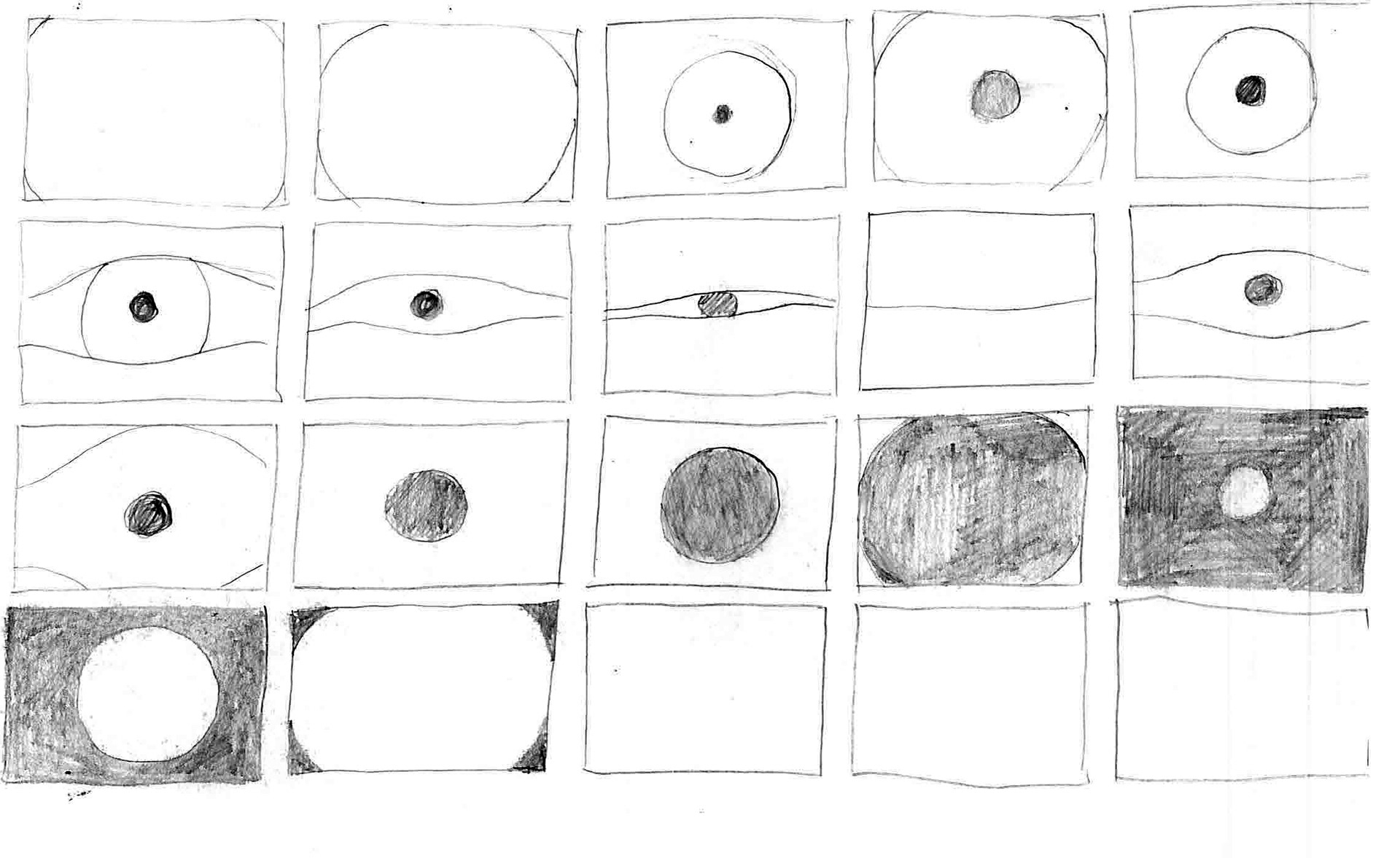
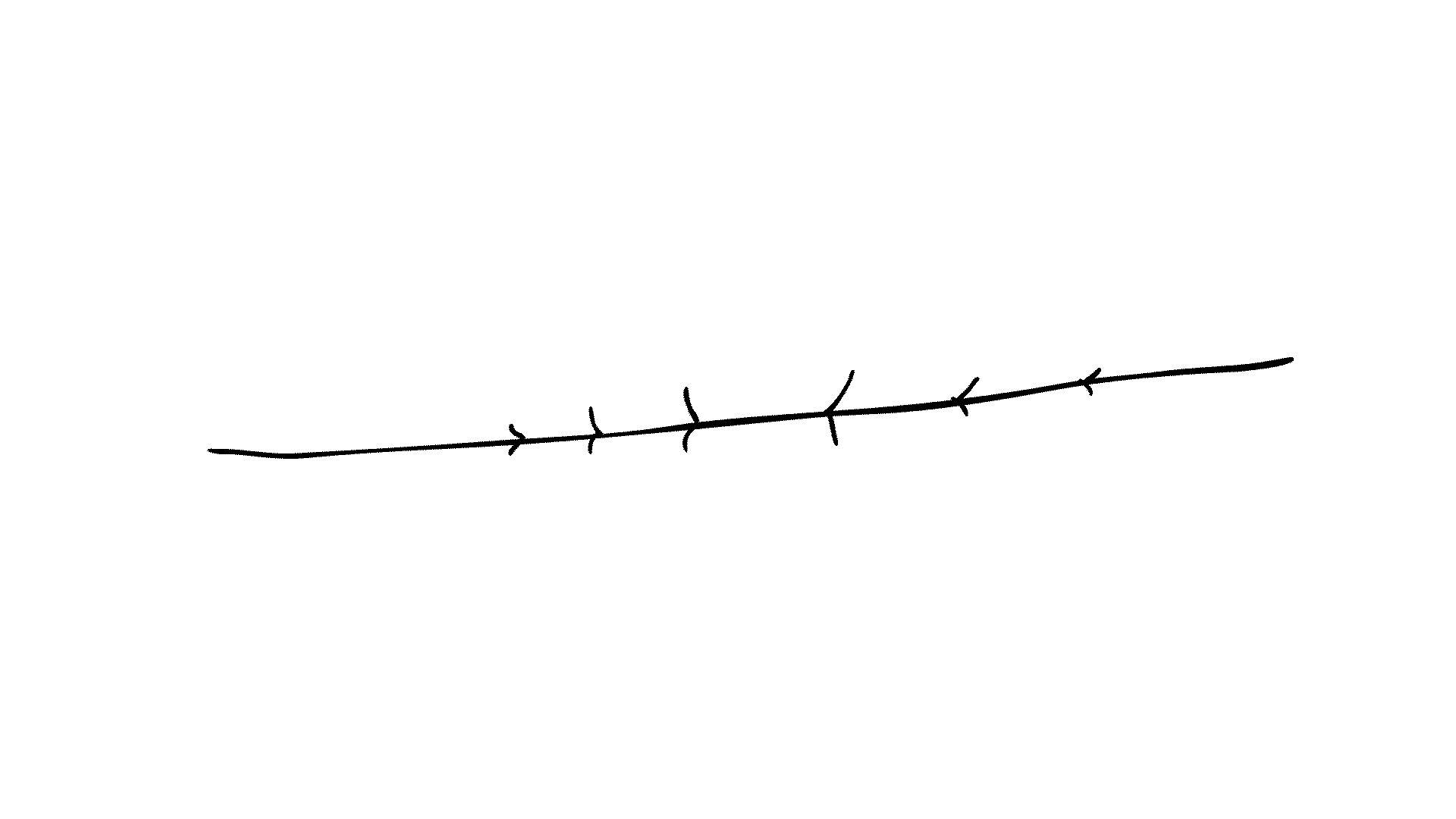
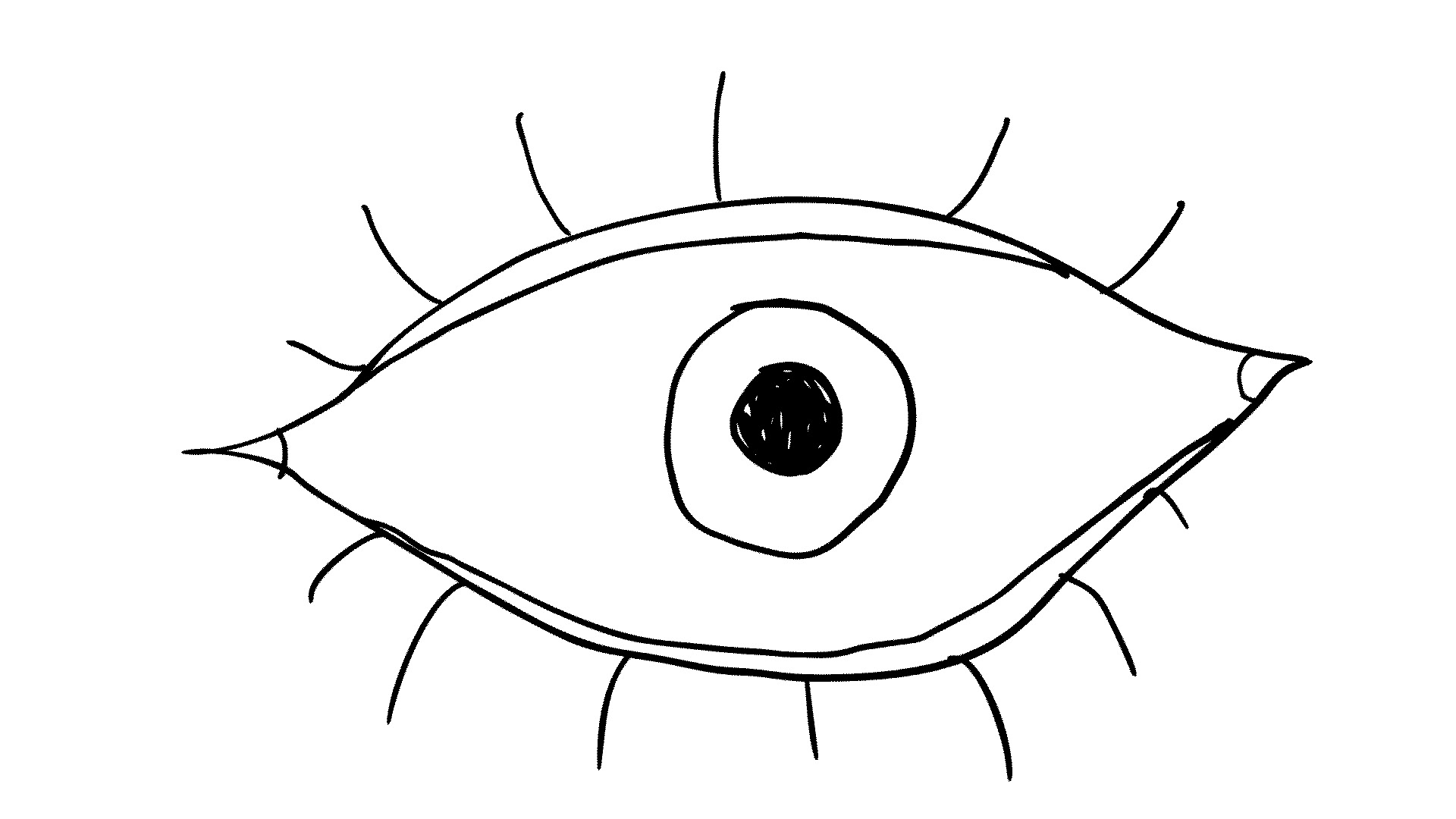
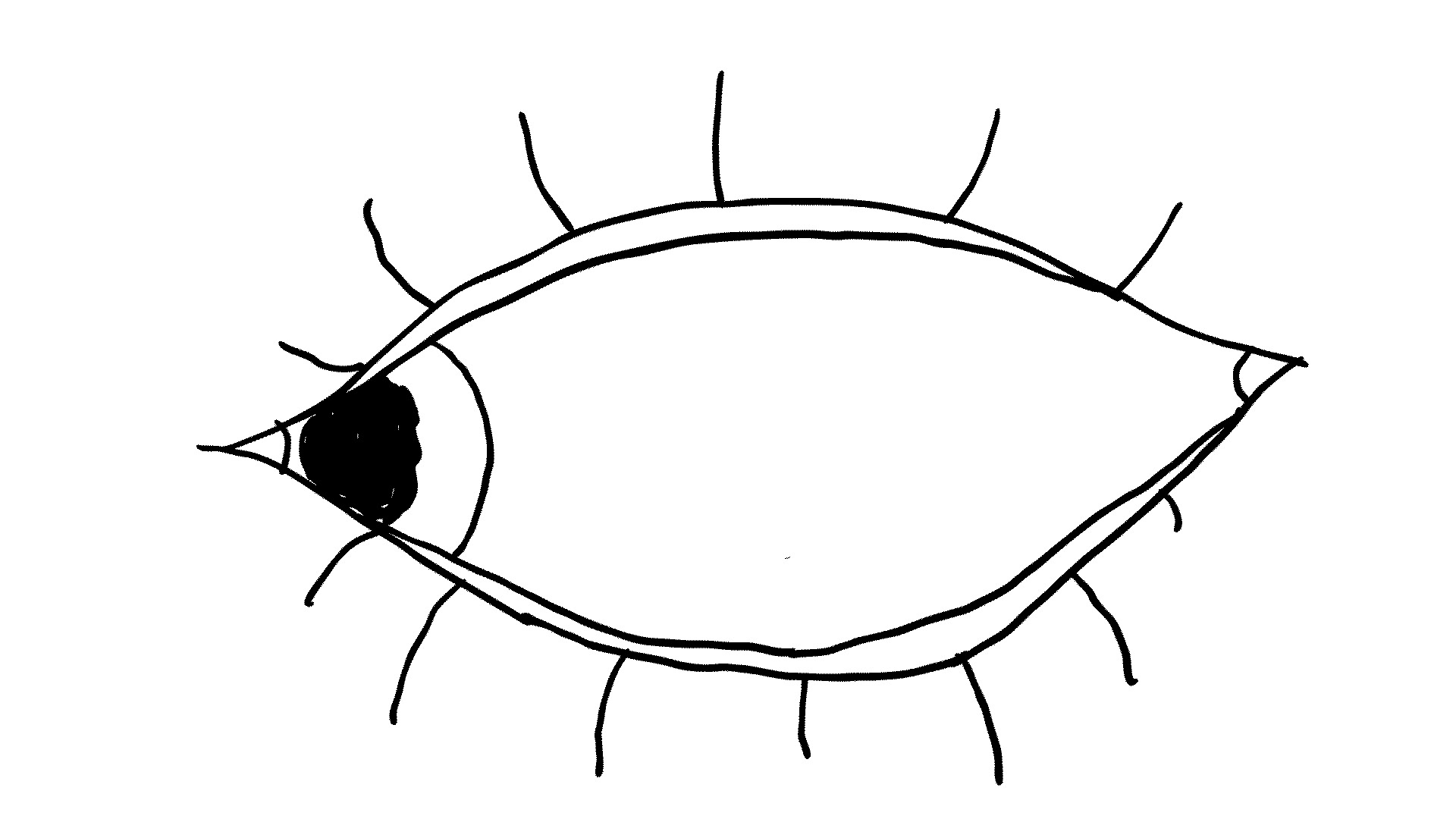

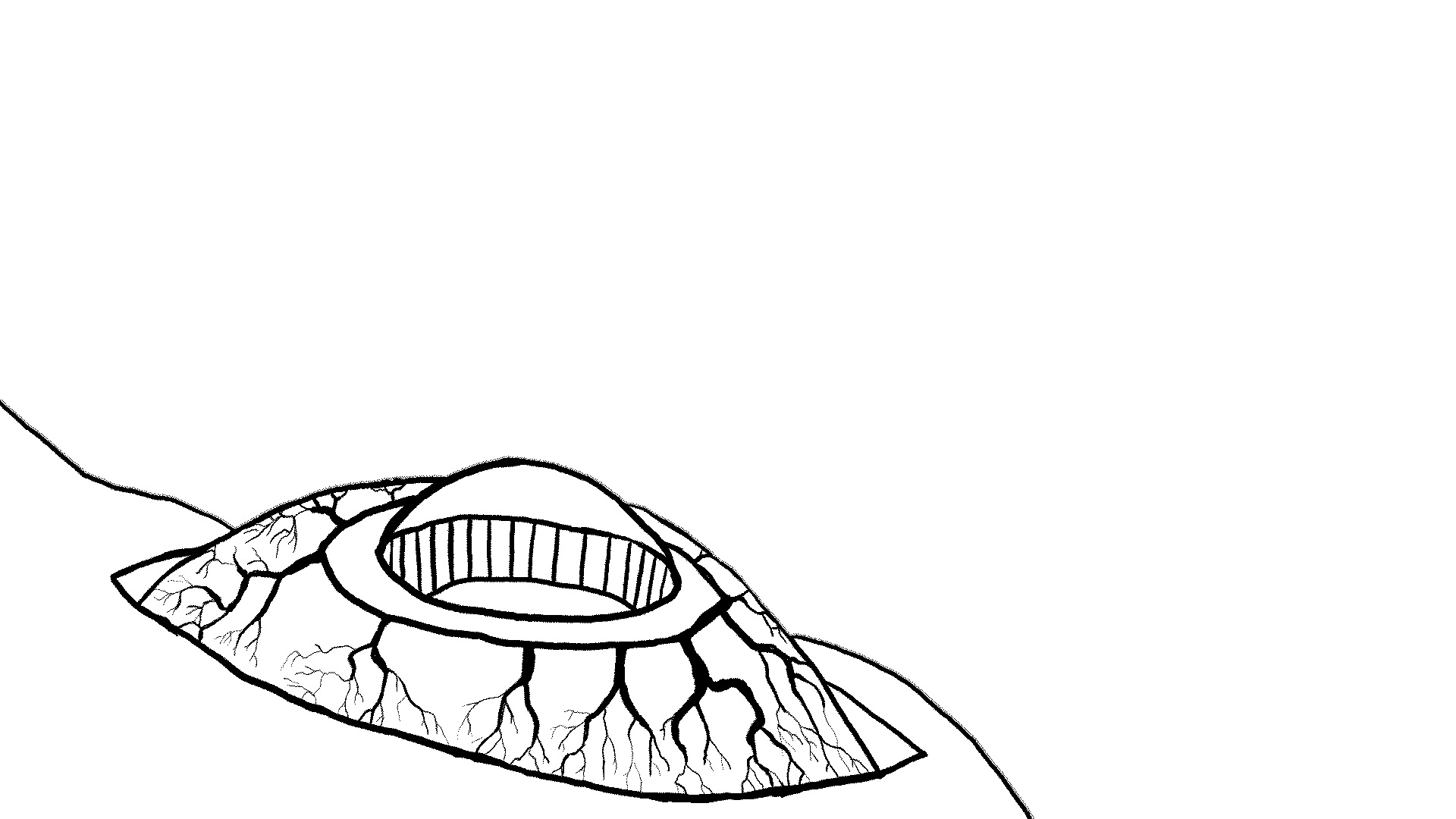

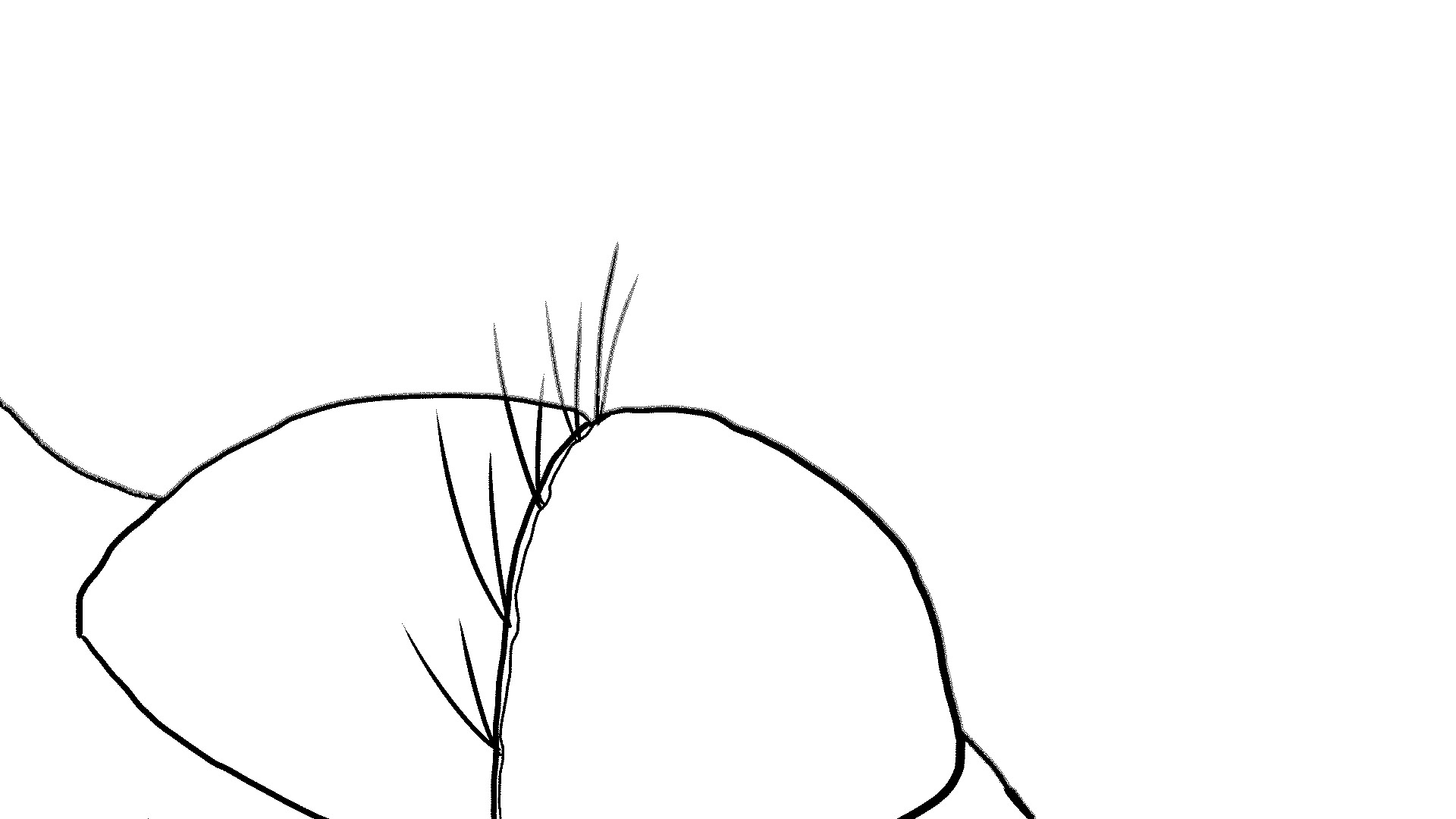
Eye can see you. You can see eye.

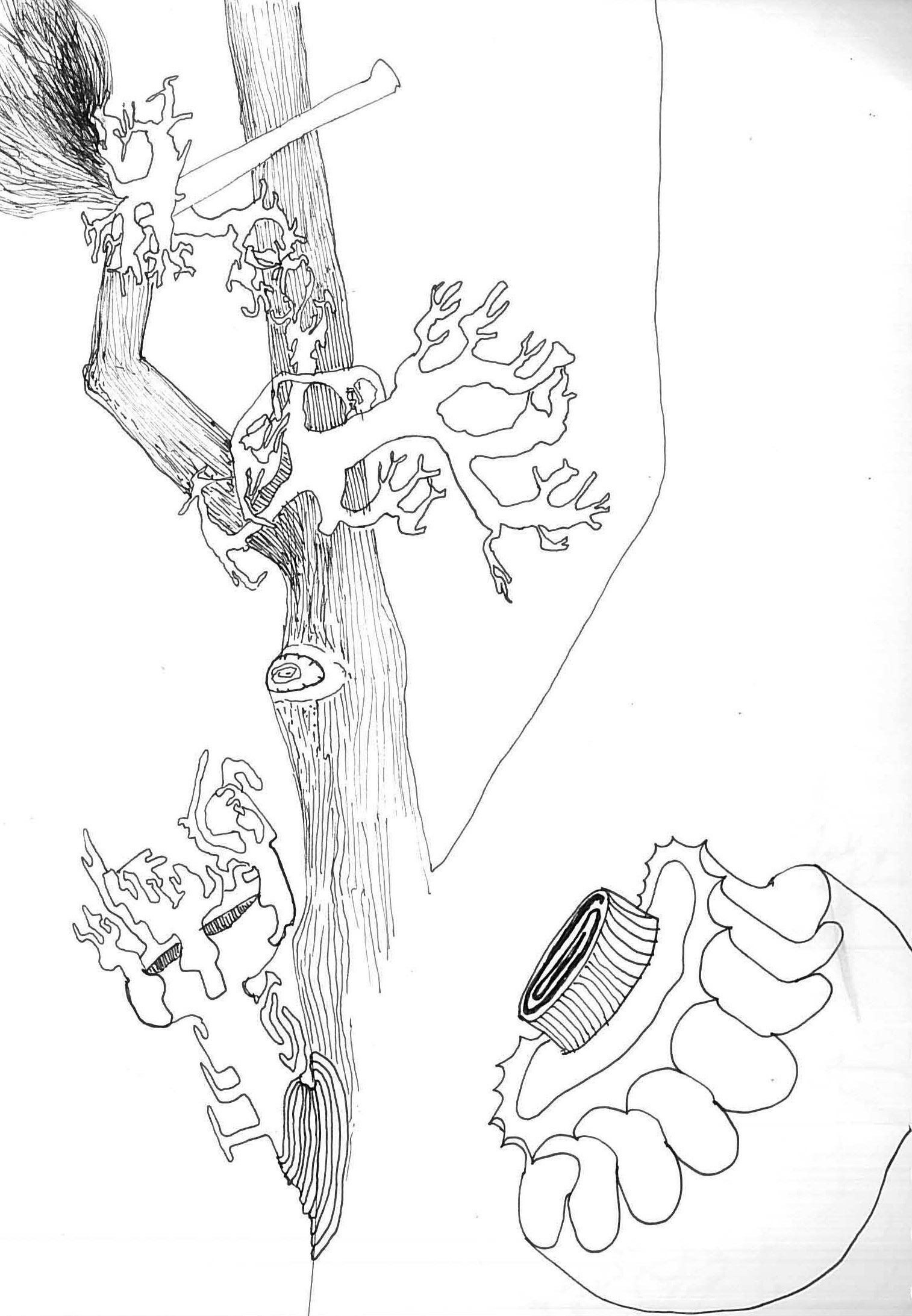

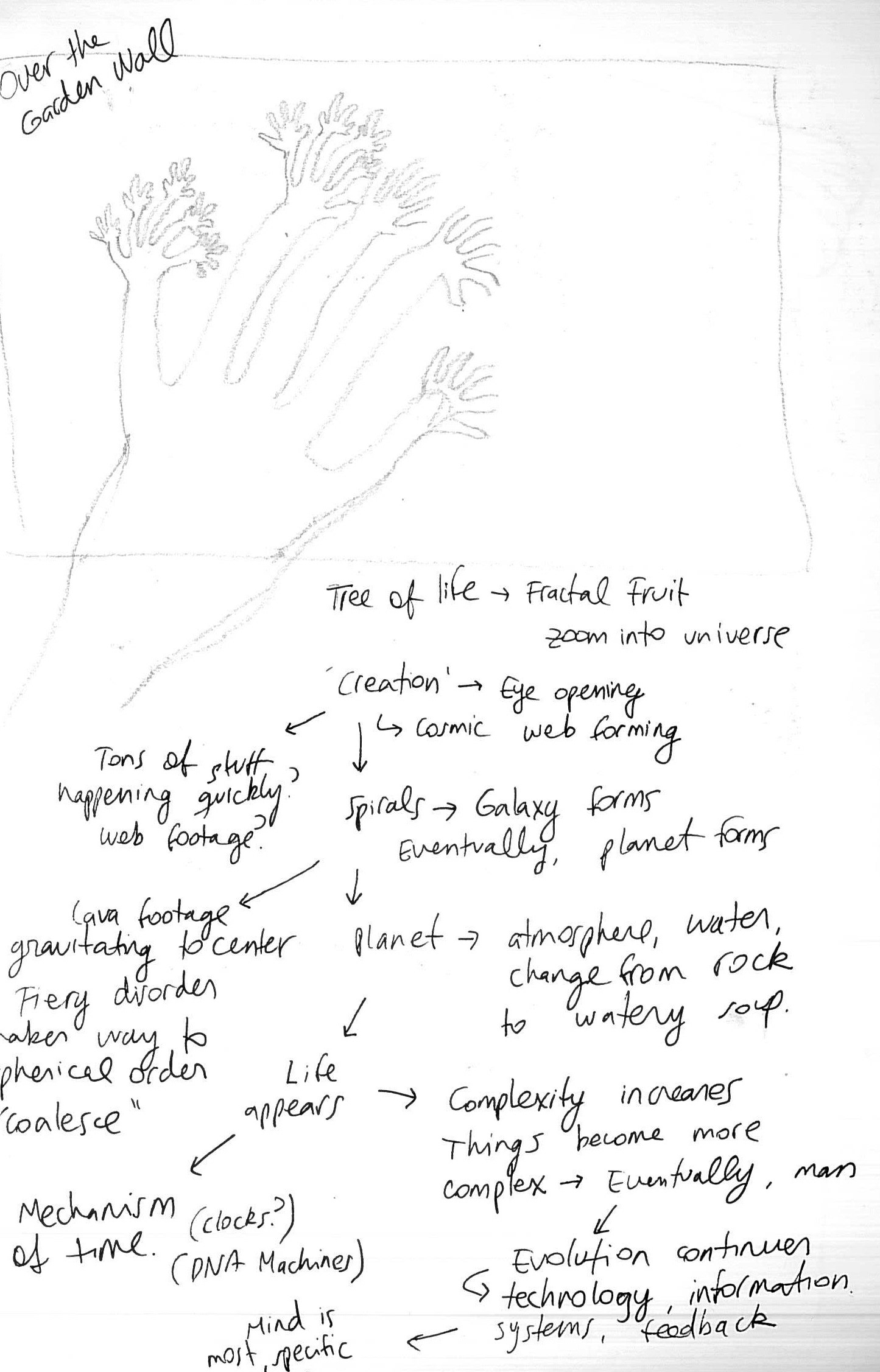

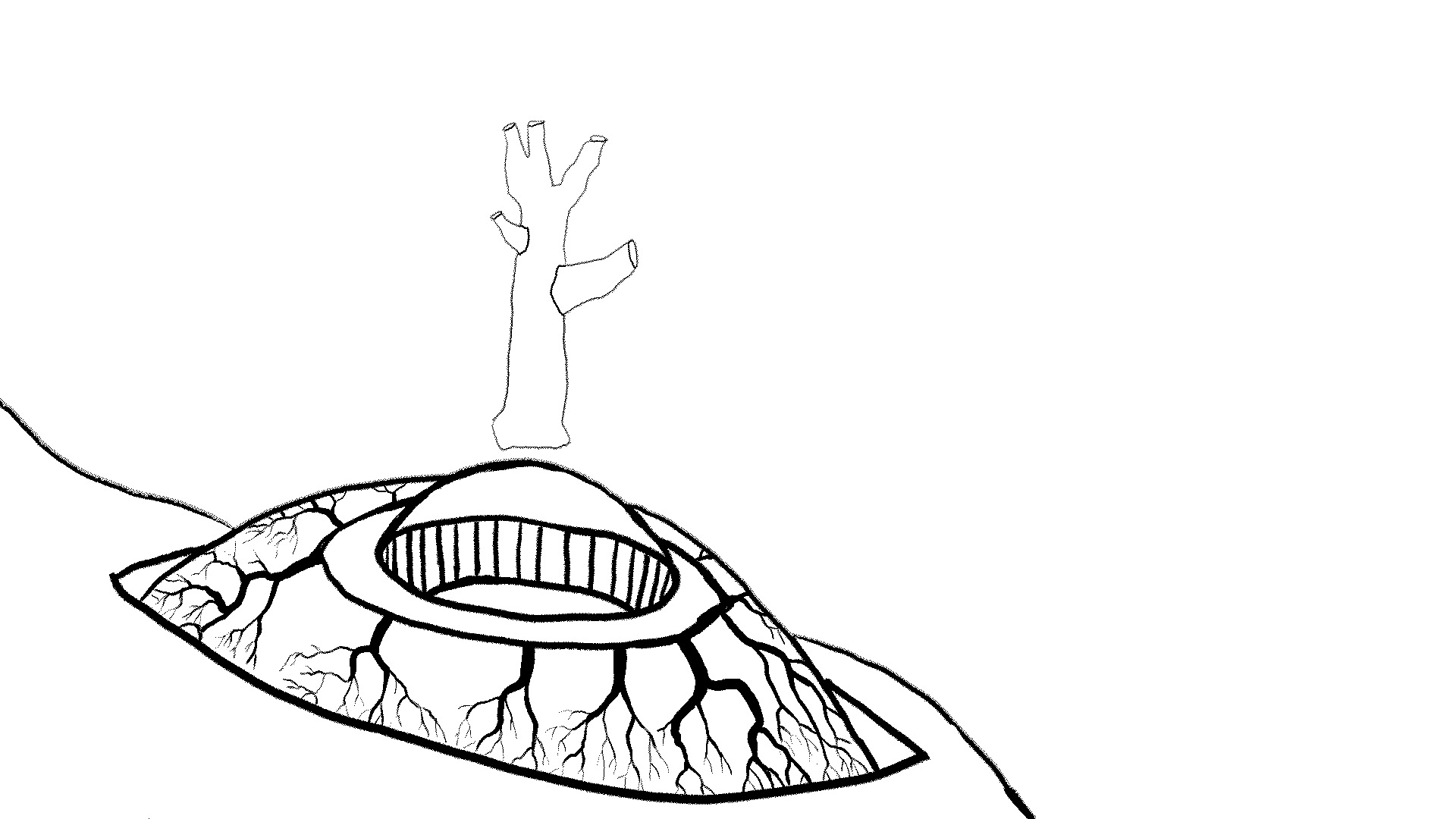

Thus, this essential tree firmly planted upon the ground of being something, here, upon the earth, we proceed to flower, fertile. The world, it seems, blooms into this infinite variety of things that are seen each moment. We glance, agape, awe impressed upon the brain, staggered by the sheer enormity of being glancing.



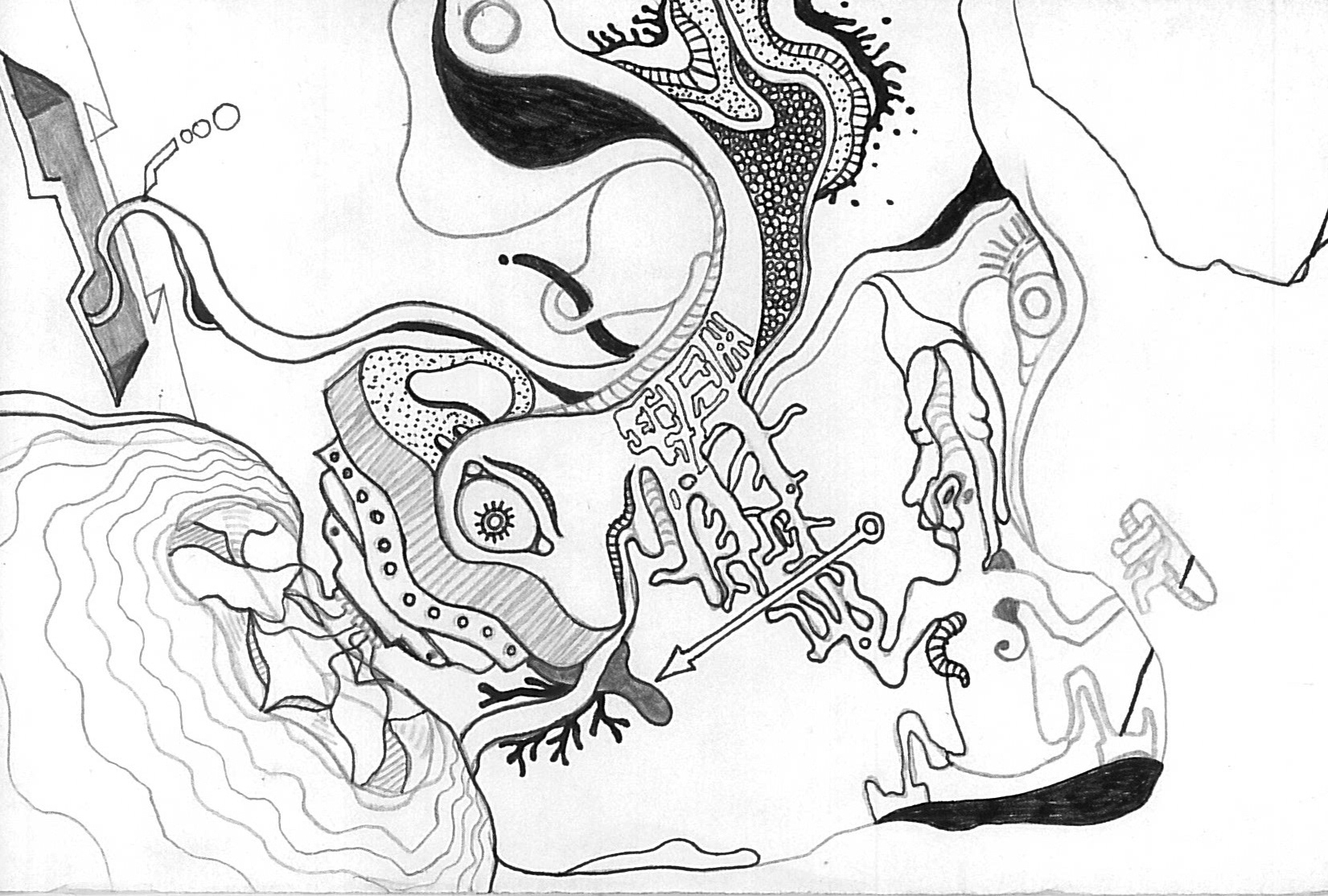
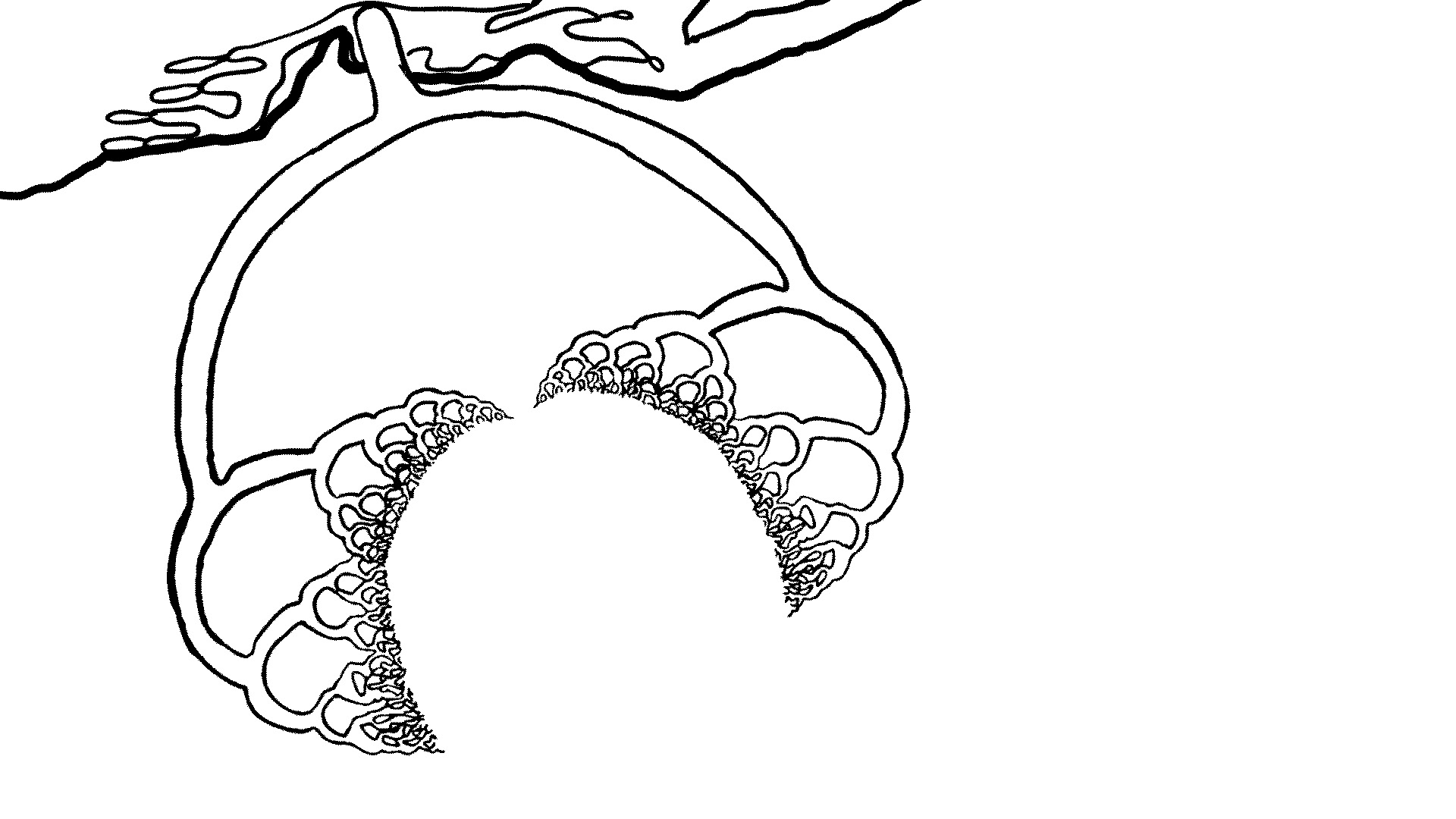


There, amidst the vertical labyrinth of forms, we can but imagine a single start, an egg, single crack on its shell of void pre-cosmic. This emergent crack, from which burst forth once this arrow of time. Every instant, abhorrent, orgasmic or plain gray, swallowed by the entropic maw of change. Everything vibrating, everything shaking unstoppable by the celebratory explosion of finally ripping (perhaps, sewing) the void inexplicable with, perhaps, explications, causations, sequences exact. Shaking inevitably random, fluid quarks arranged into patterns chaotic, gravity whirling indistinct from light, weak force, electromagnetism, who knows what else in that primordial dance whose rhythm we’re still dancing to.
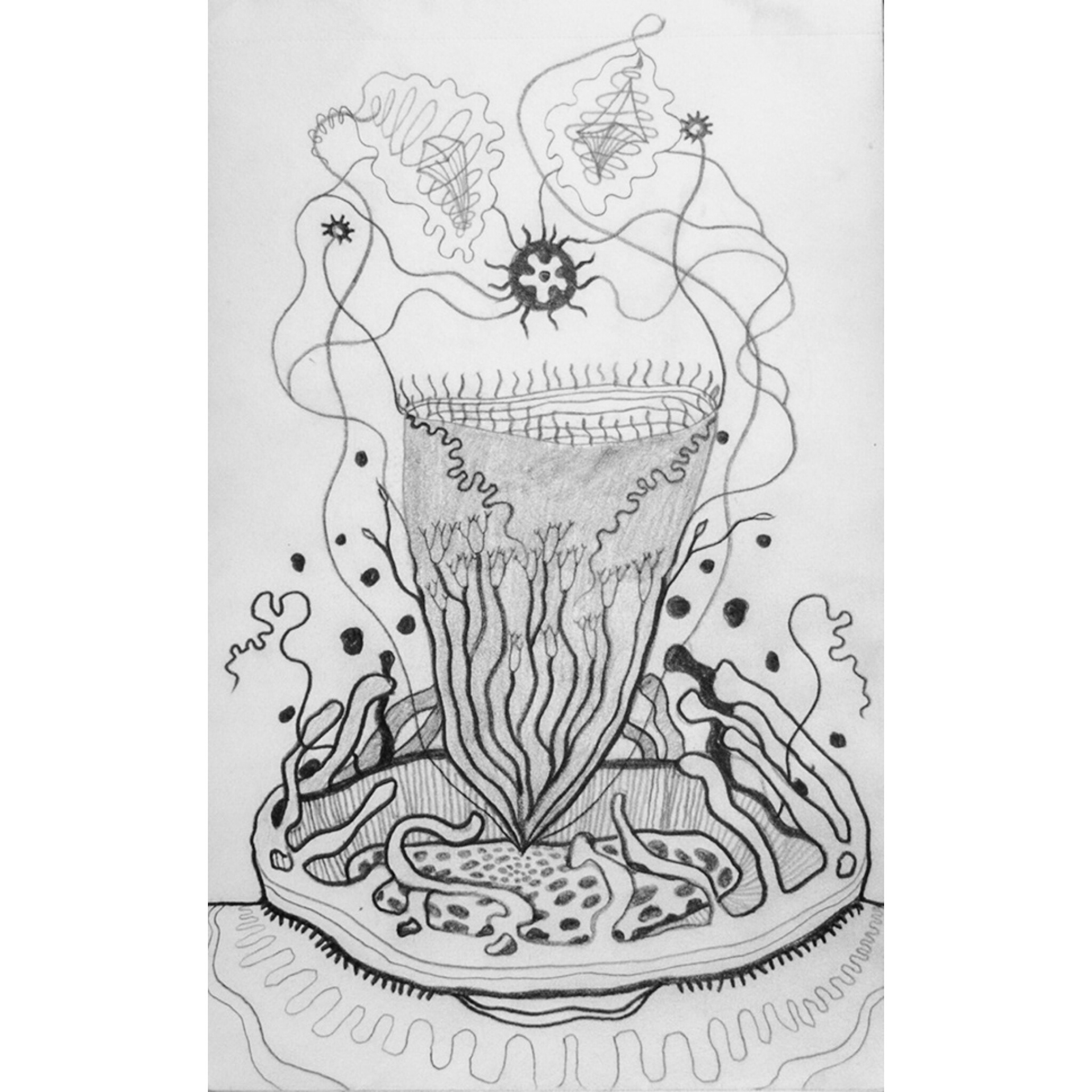




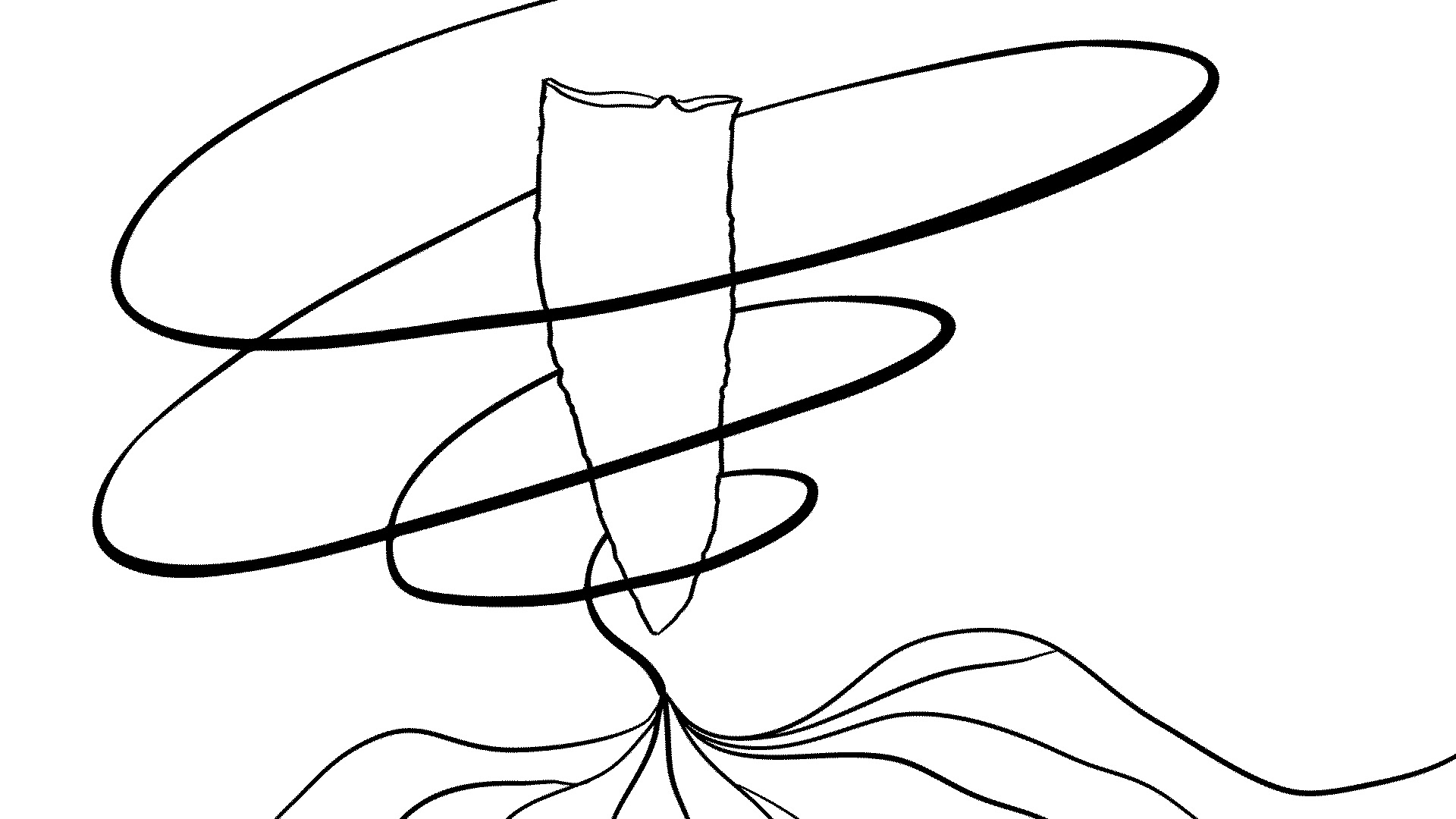

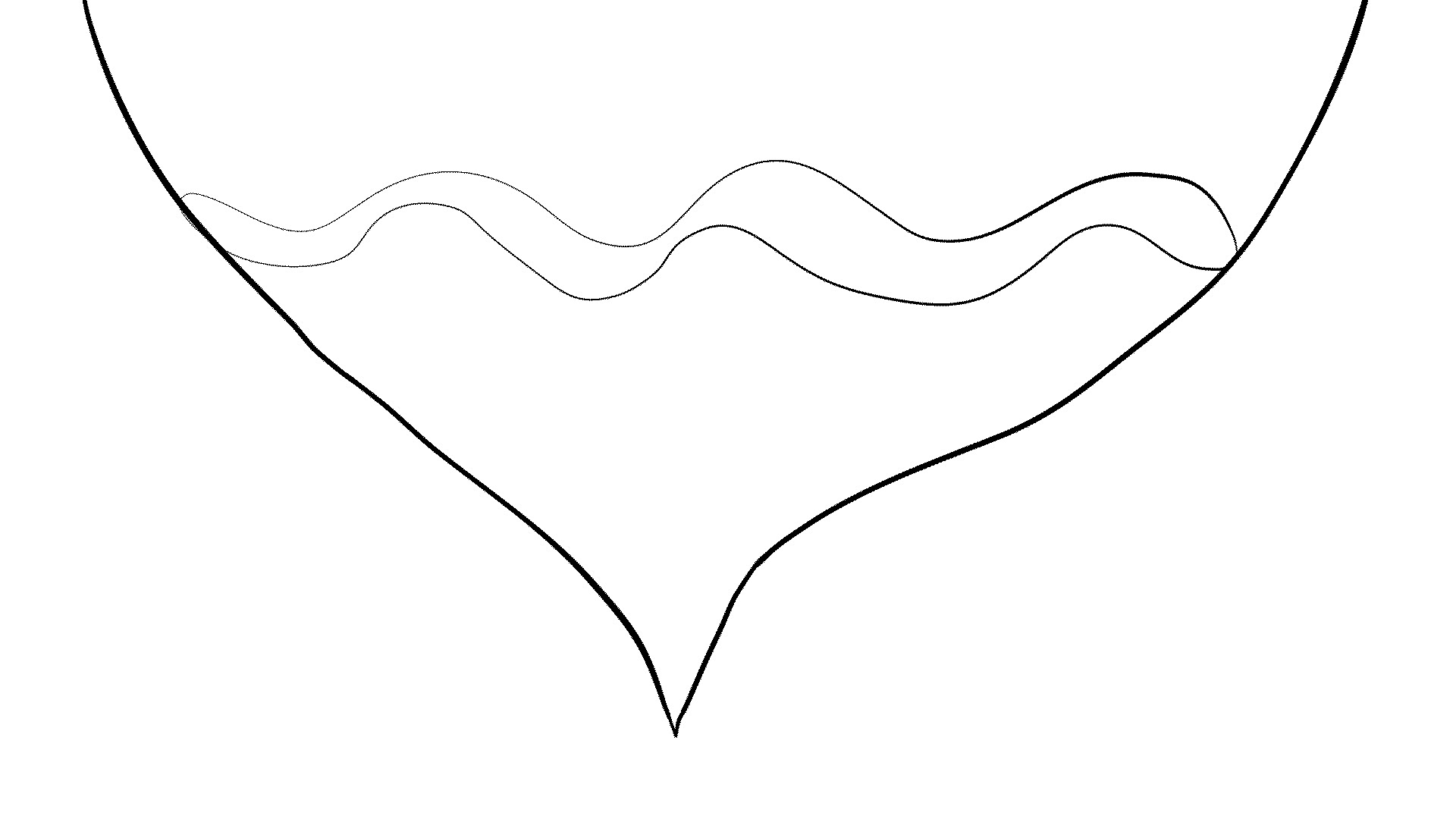
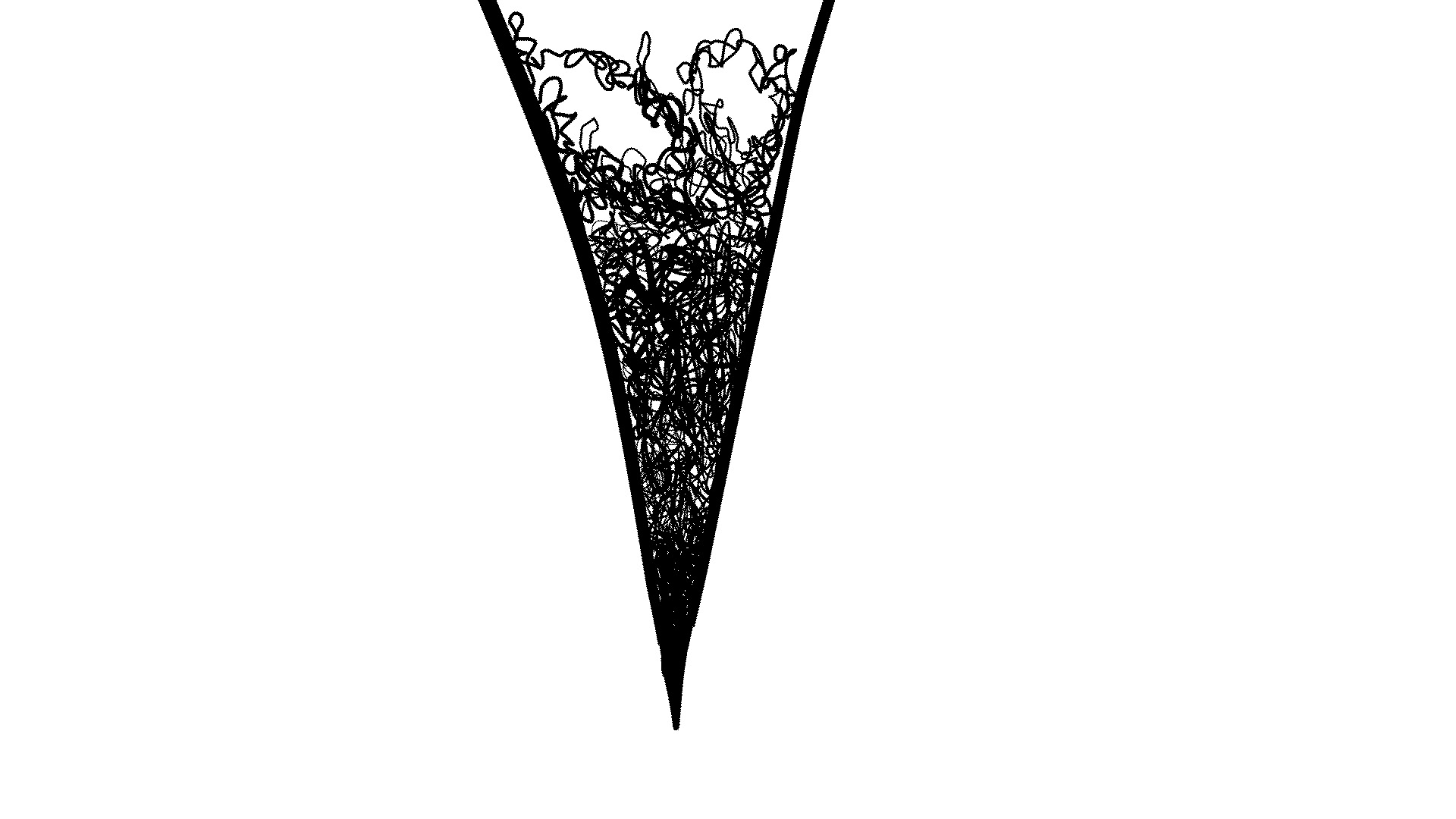

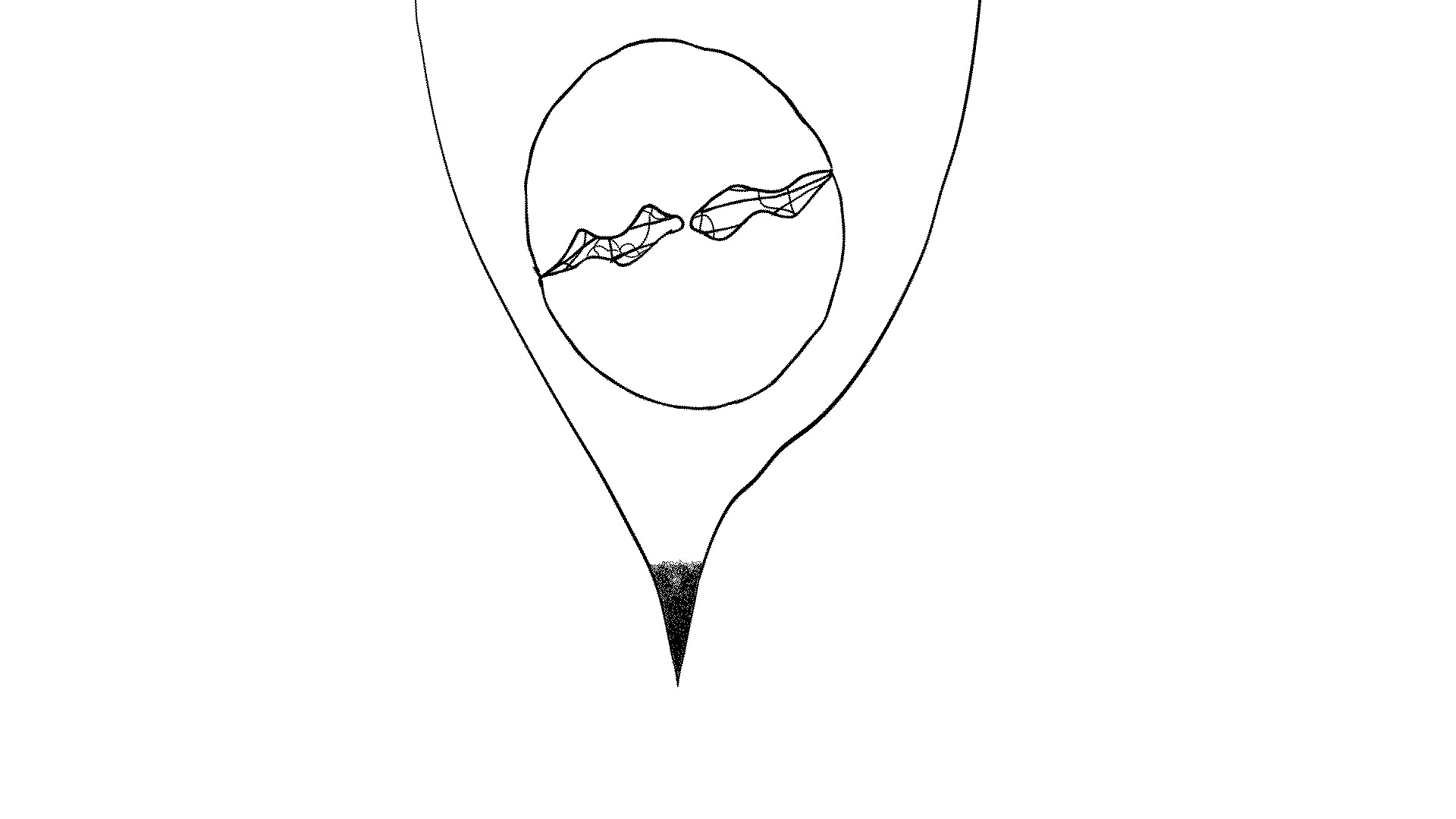
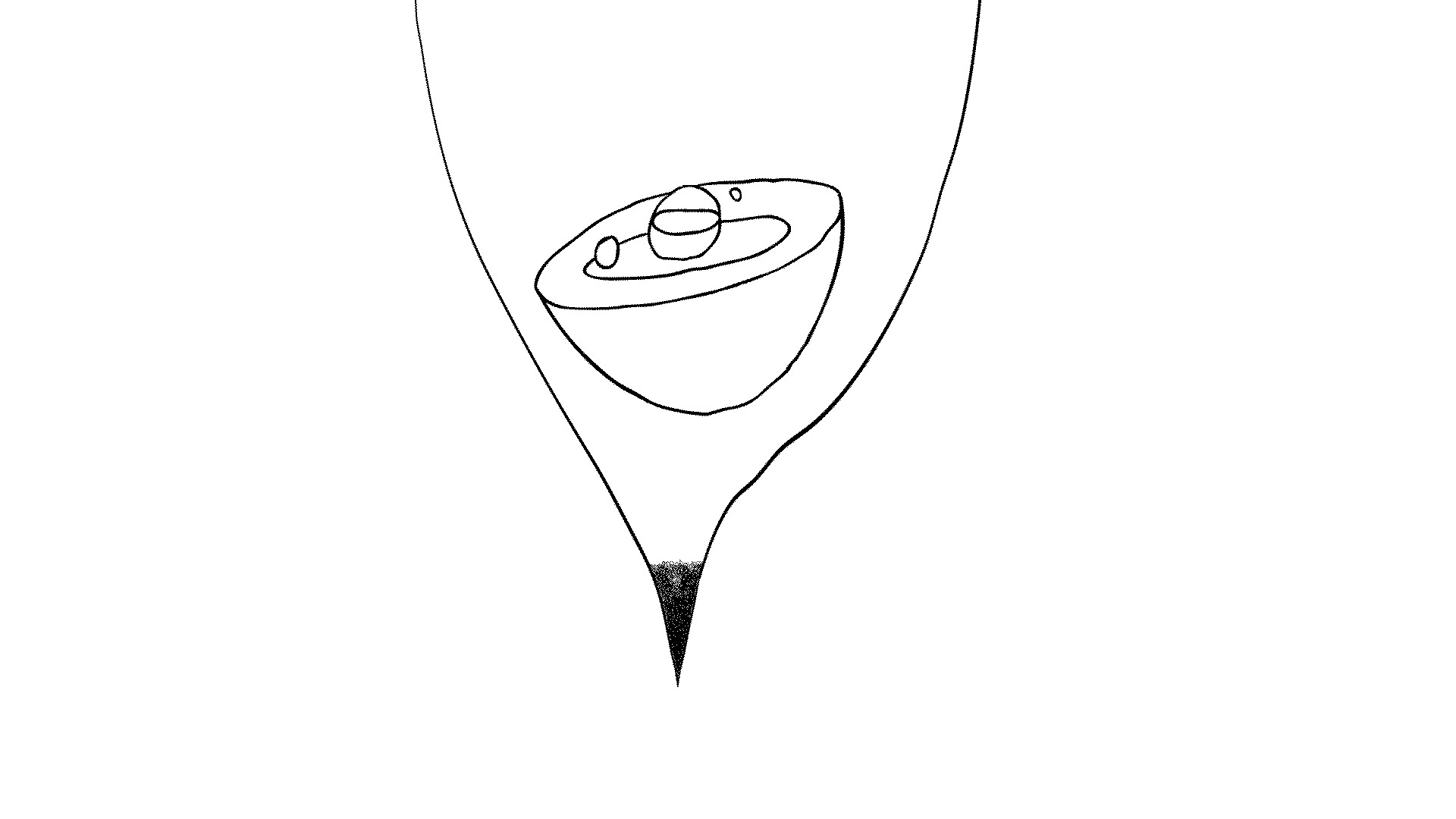
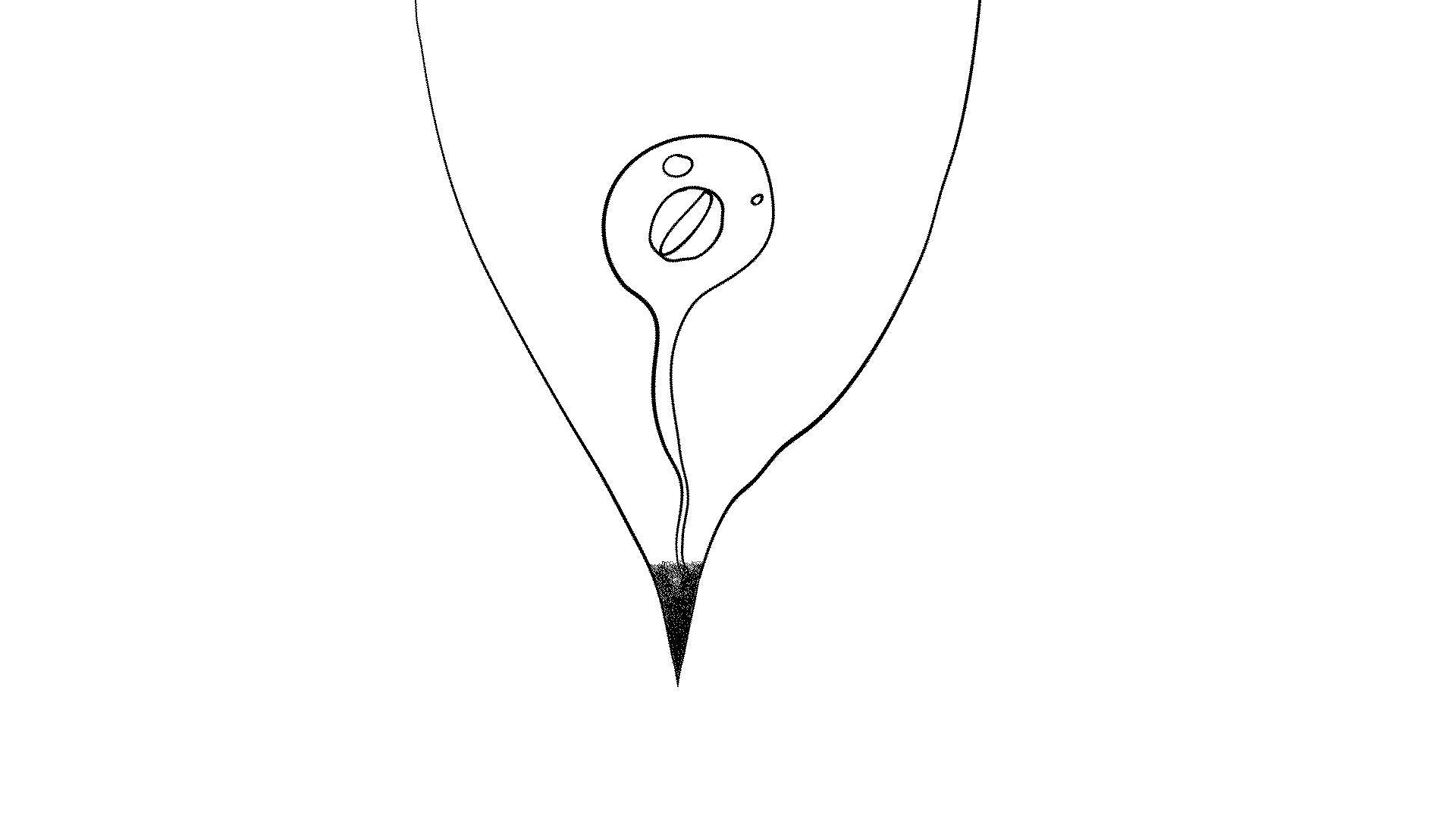
This bubble of density here, this vacuum dead nearby. Filaments of gas, congealed after the orgy elementary, spreading around the shape of the new-born web. Specific points ever denser, attracting with a spinning gulp all the dust into a sphere, ever-growing – and then, in an instant of one hundred thousand years, the blinding light born, the stars burning inside the whirlpooling galaxies.


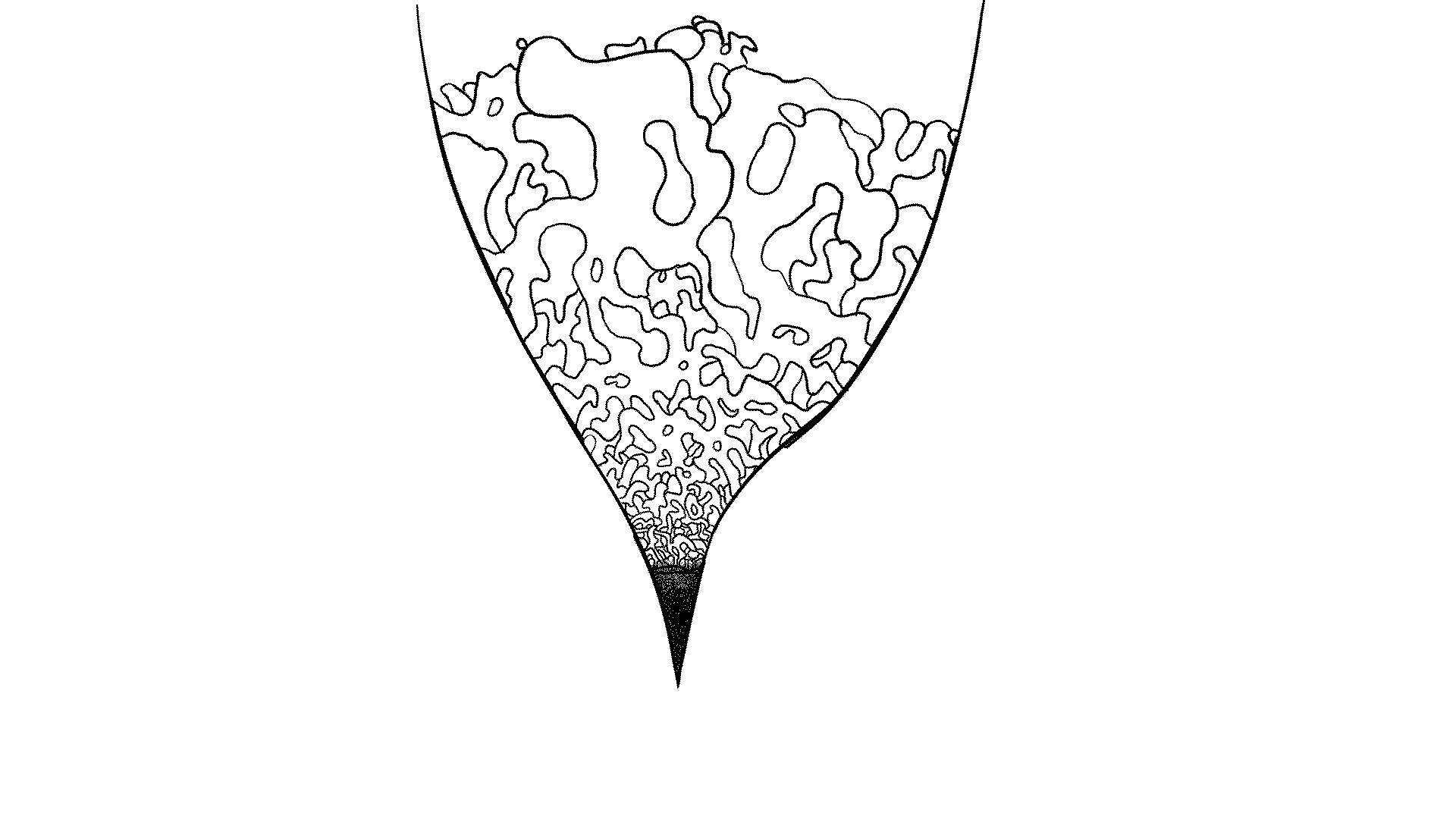

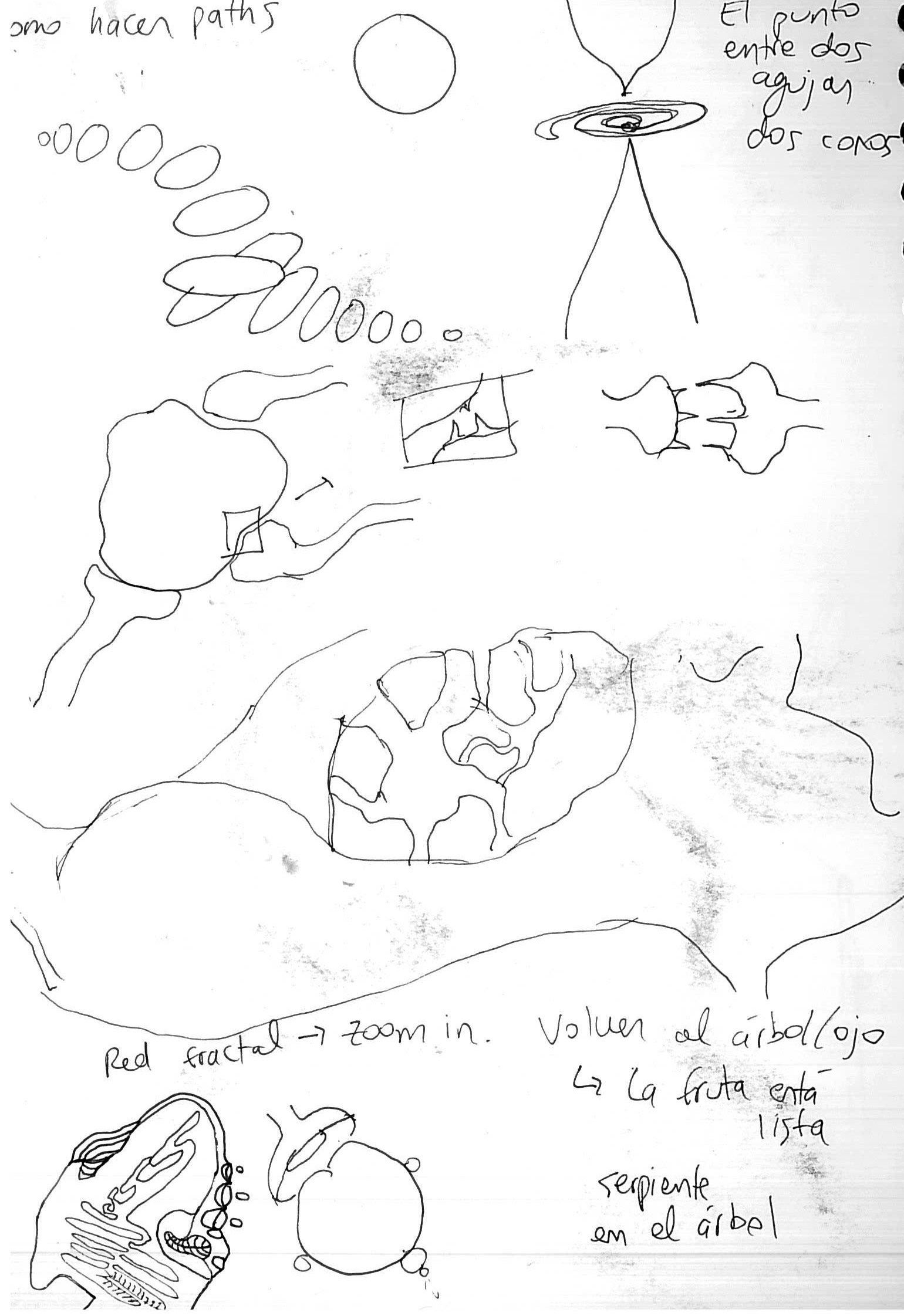
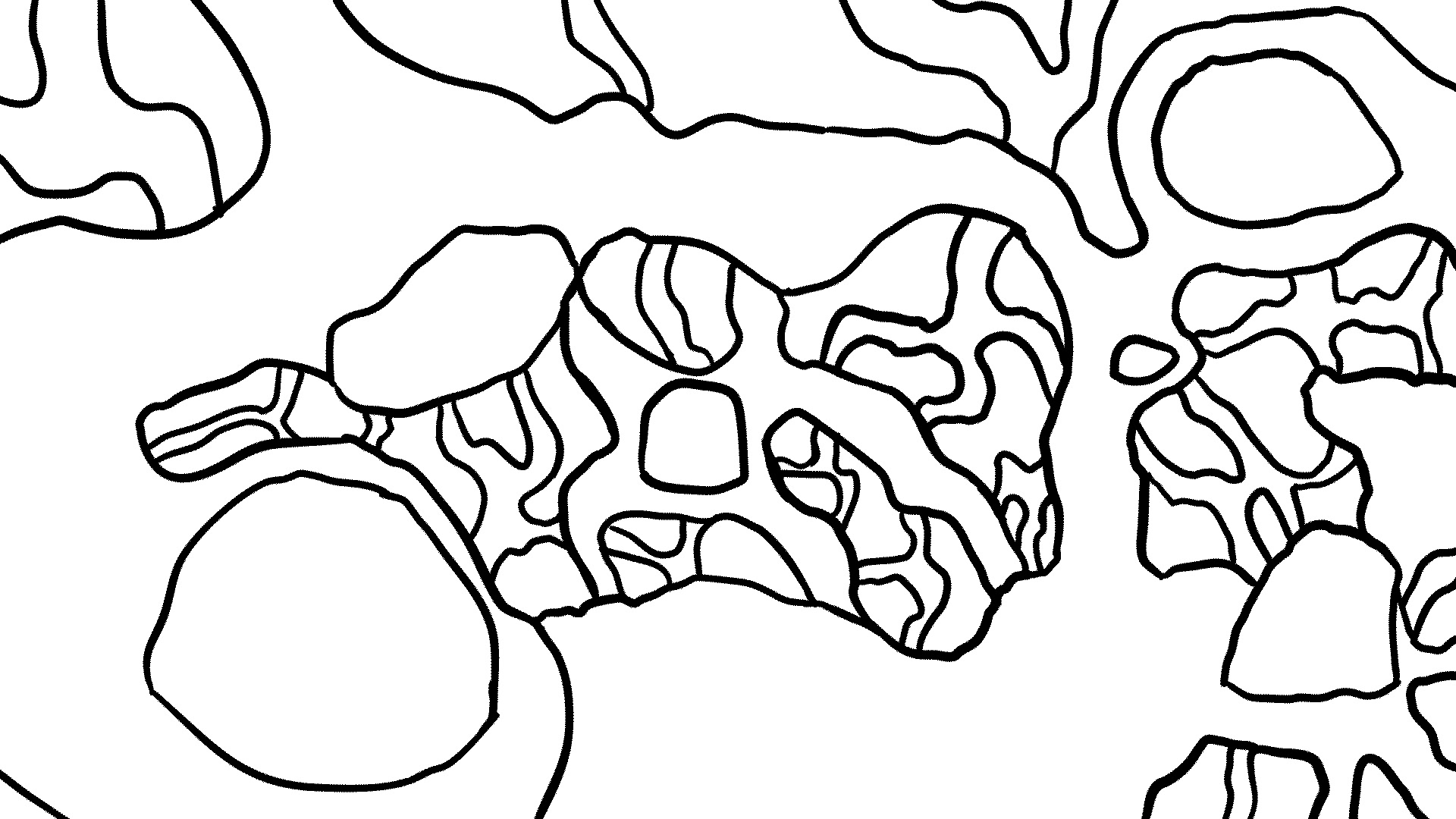
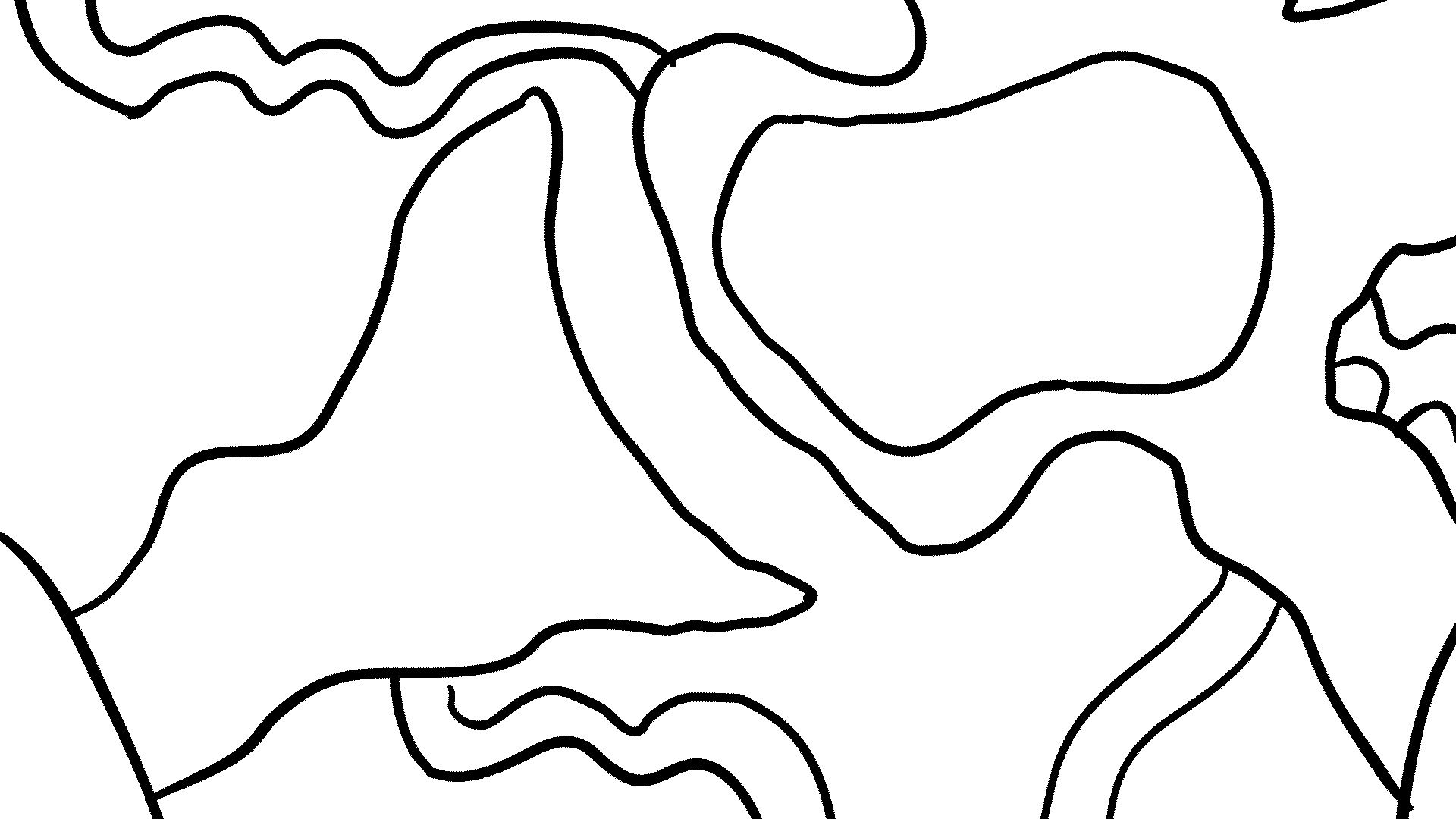


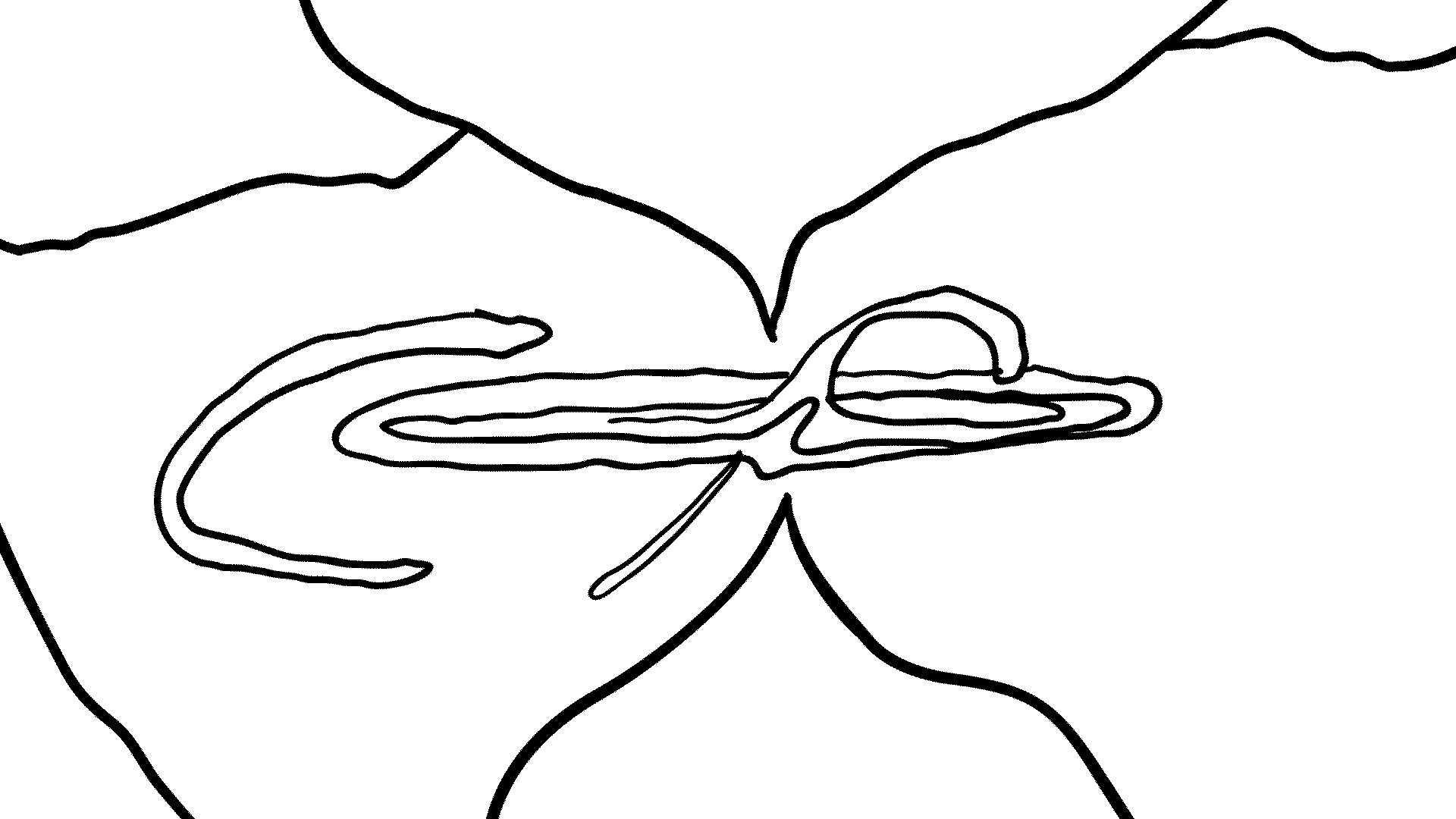
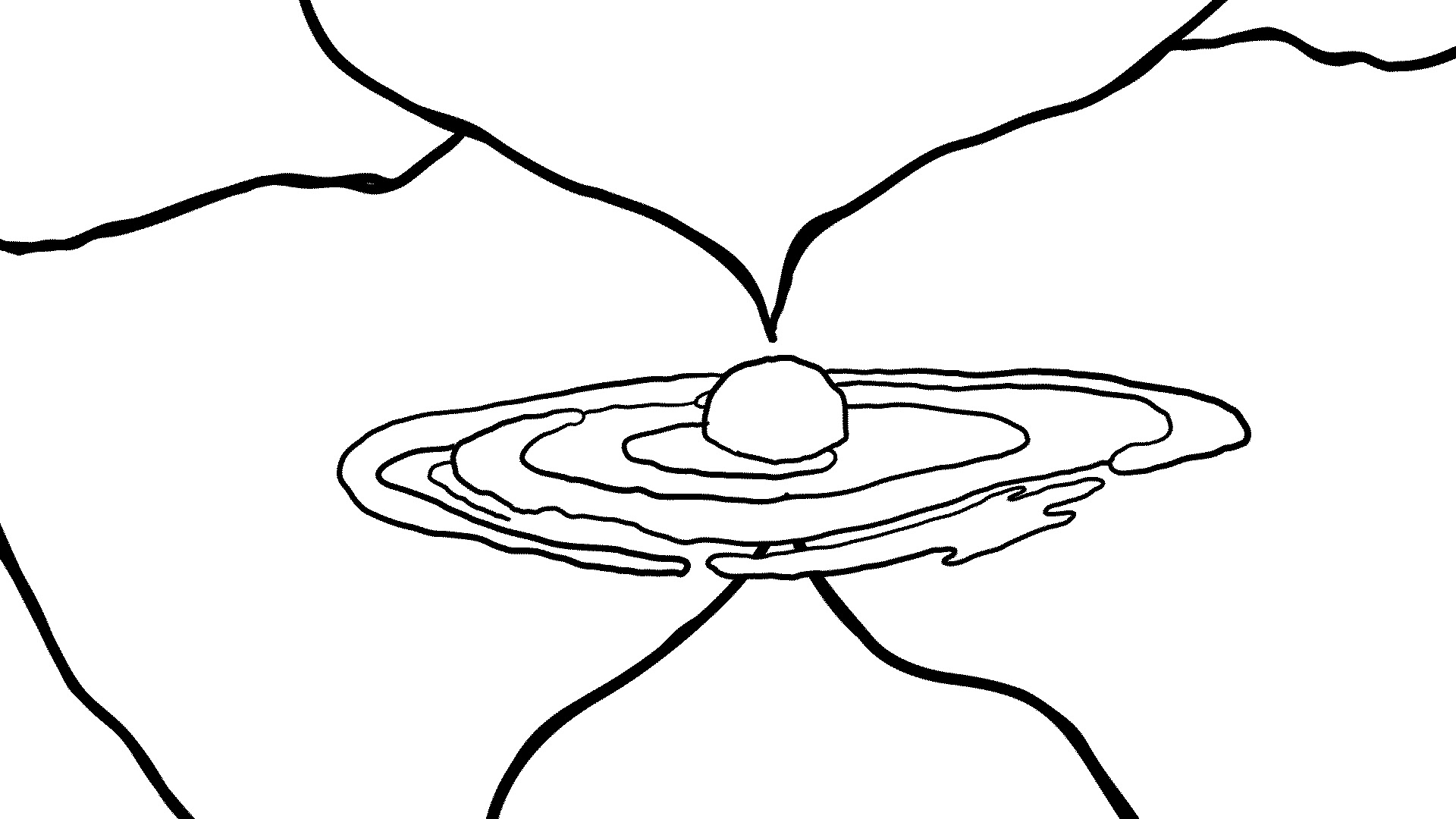
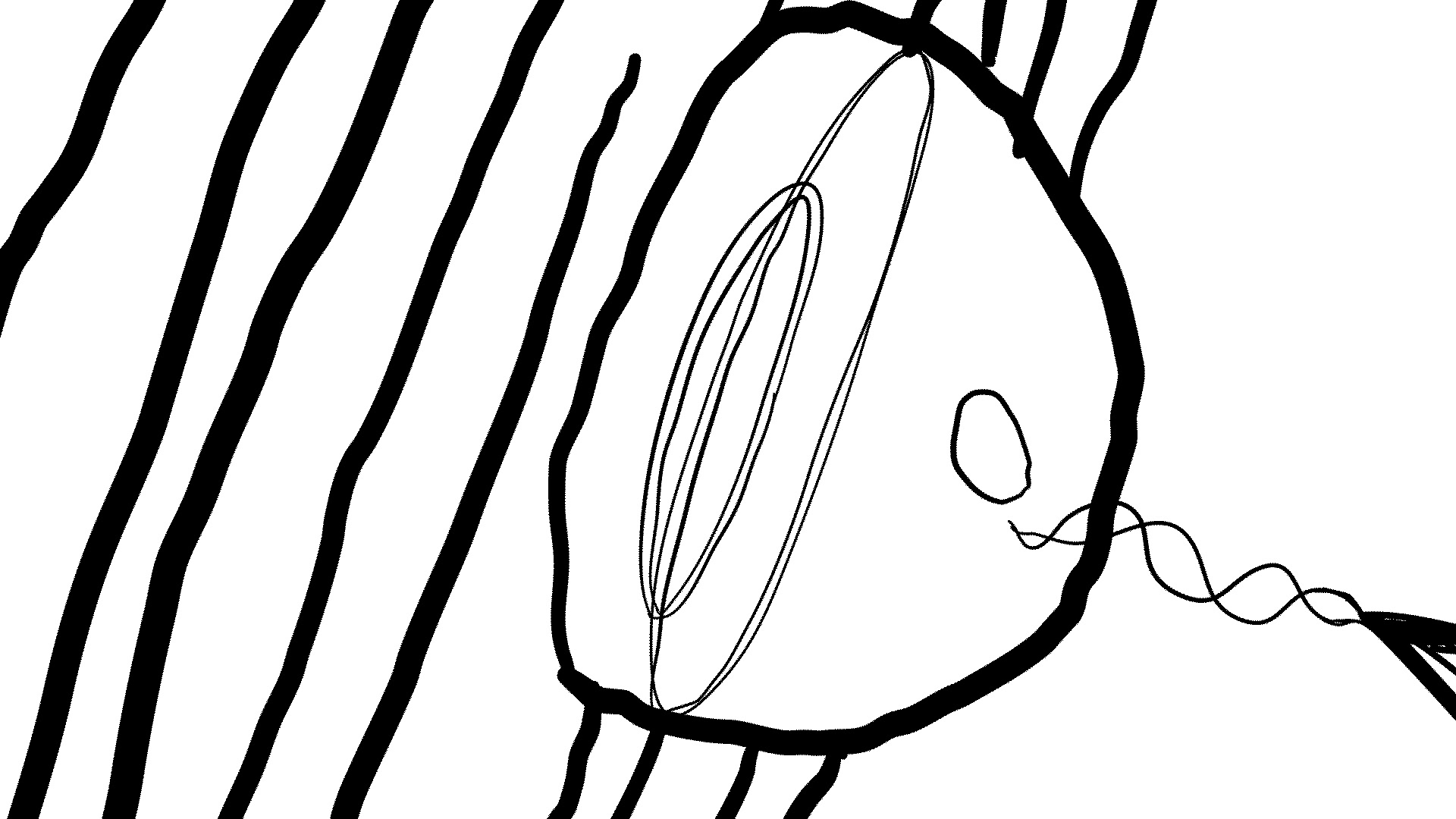

The dance continues:
Thick gas spirals around the stars, feeding them, until they can no longer contain the flames. Titanic blast, expansion sudden, diastolic hearts of warmth that in enormous palpitations of supernovae irrigate the emptiness with elements increasingly heavy. Veins of density flow around the filaments of superclusters, spreading the fertile material for new stars to appear. Everything coalesces, everything reduces itself to more and more specific points. Around the stars, the spinning gas forms pebbles, and these in turn make rocks, asteroids, and soon a monstrous rock that thinks itself bigger and bigger, grabbing all the fellow matter to become sphere.




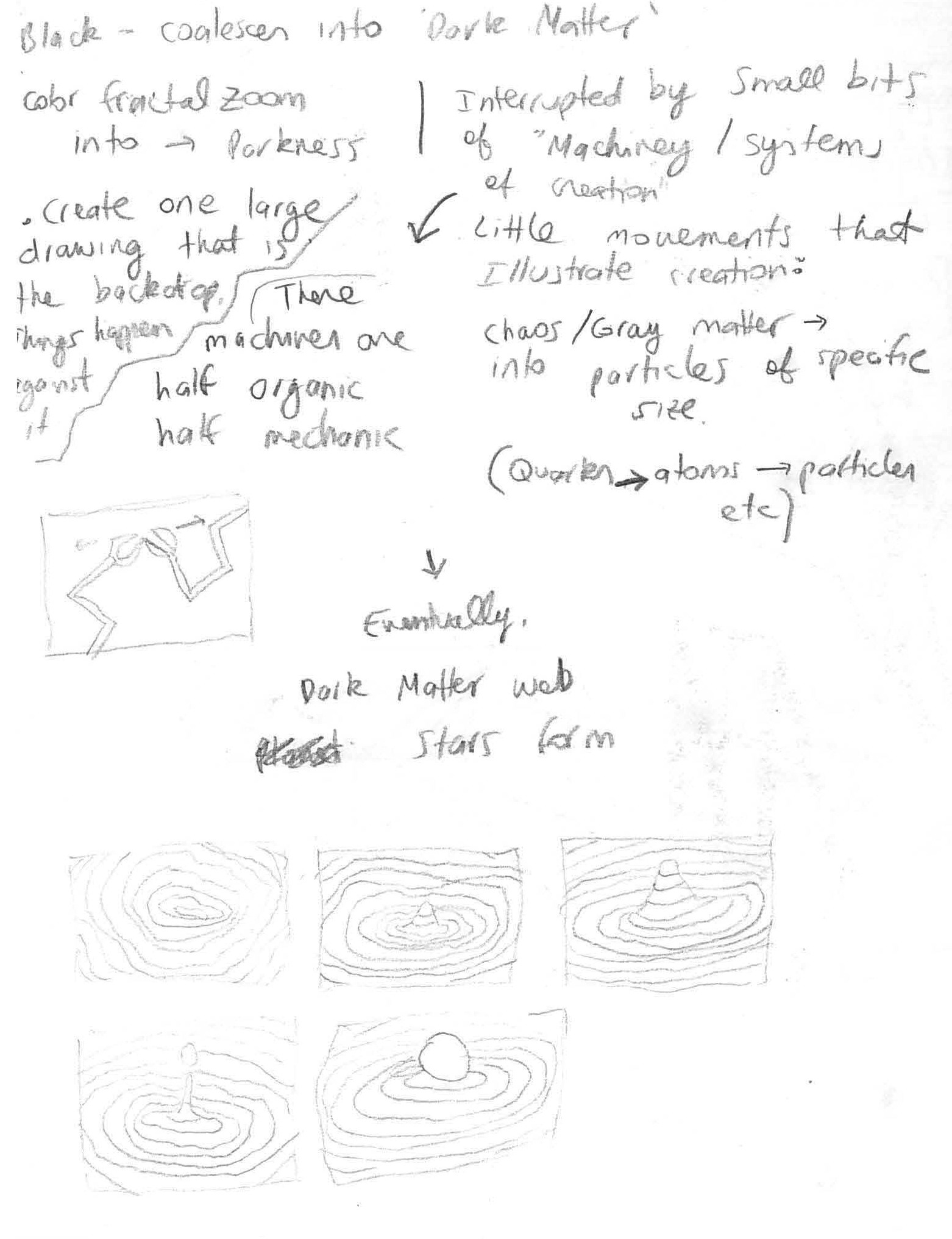
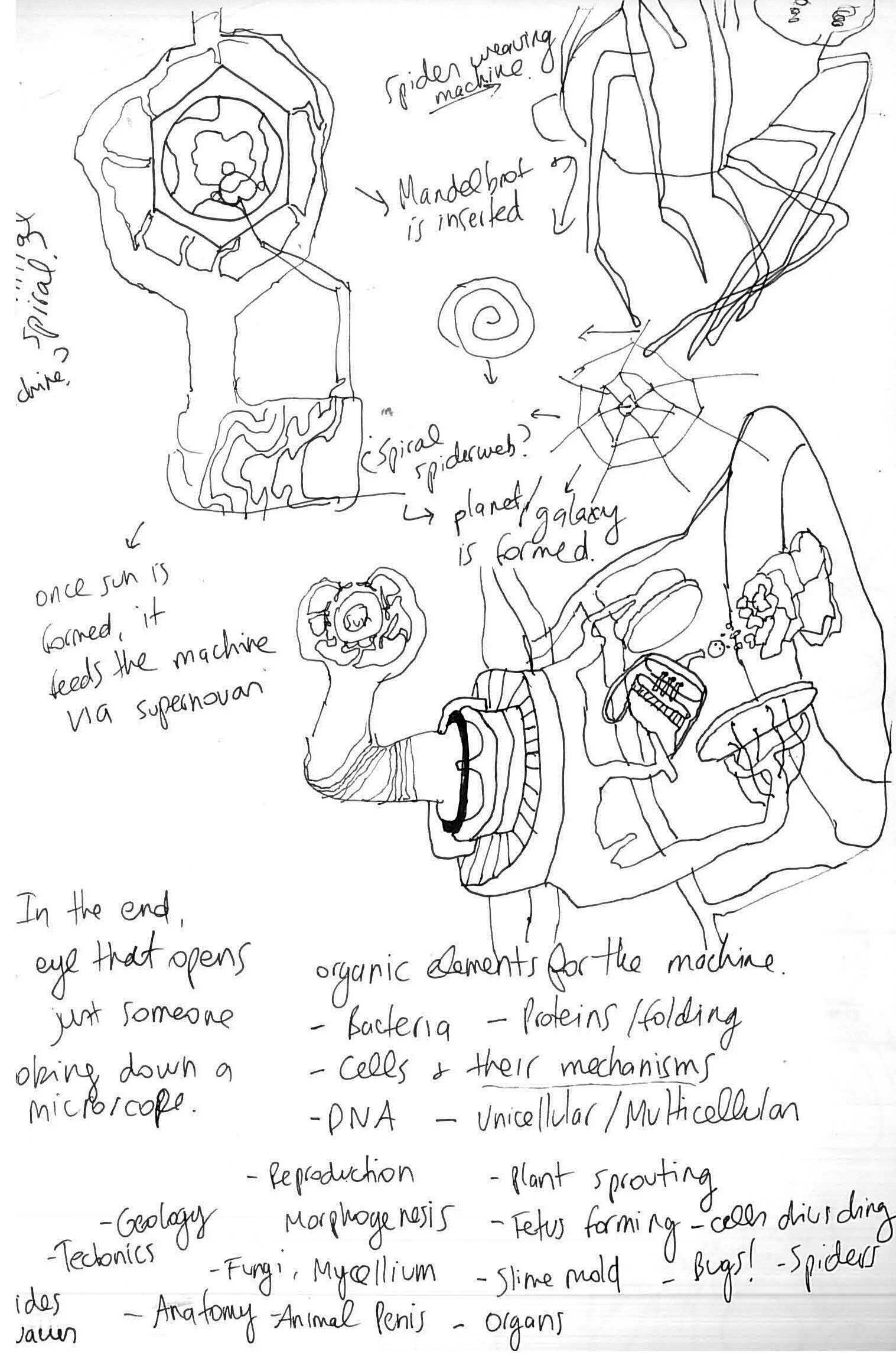
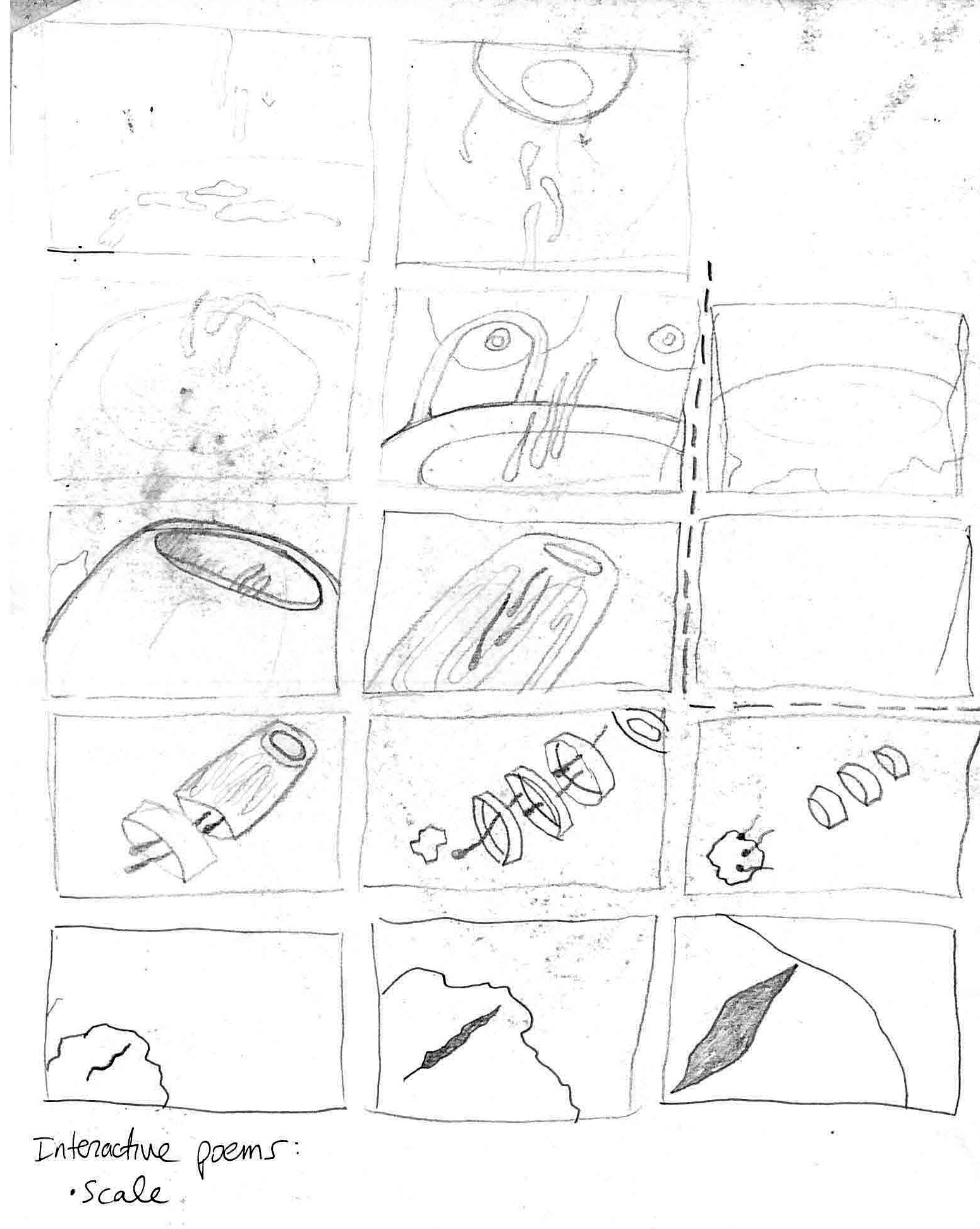
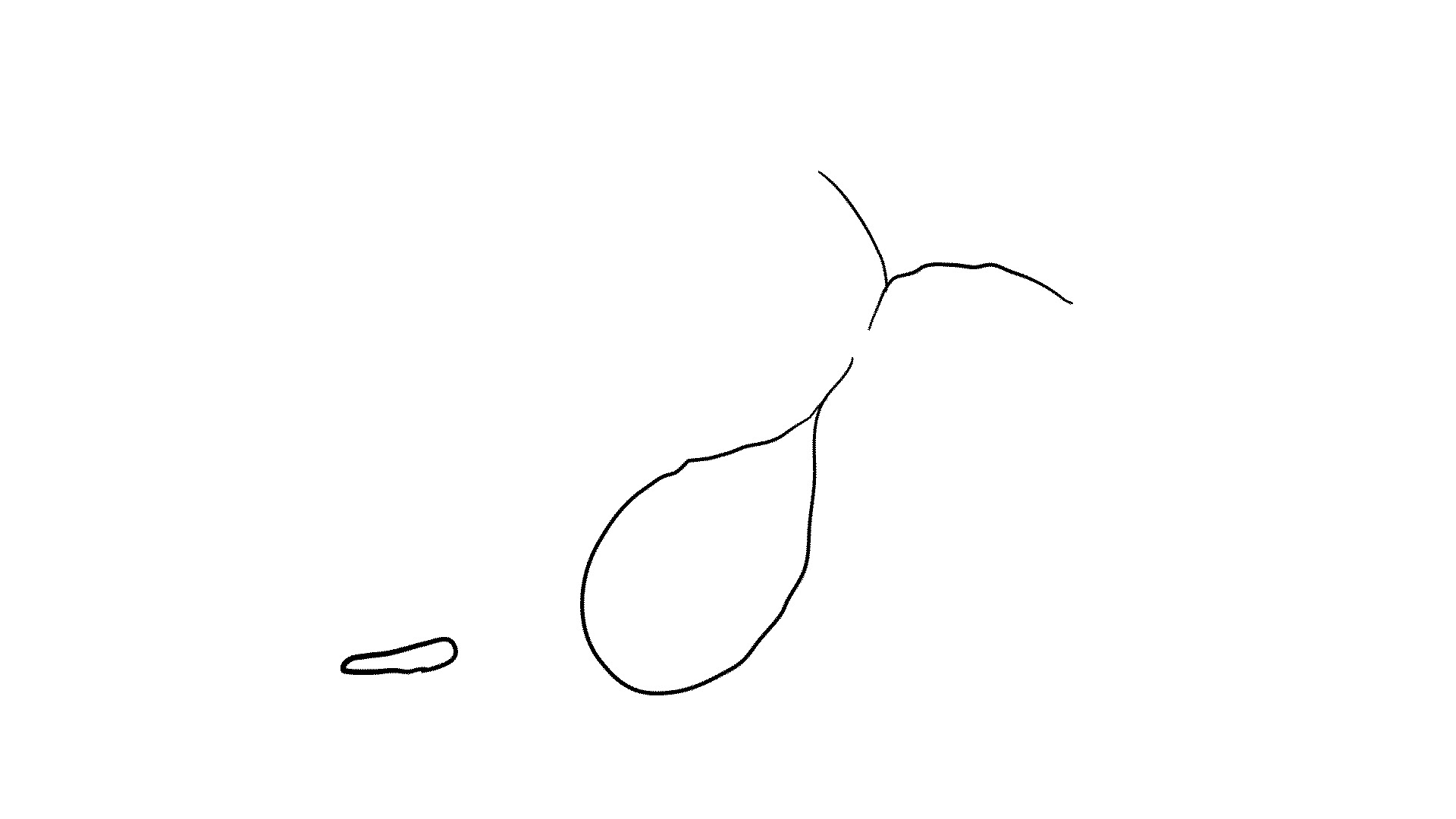

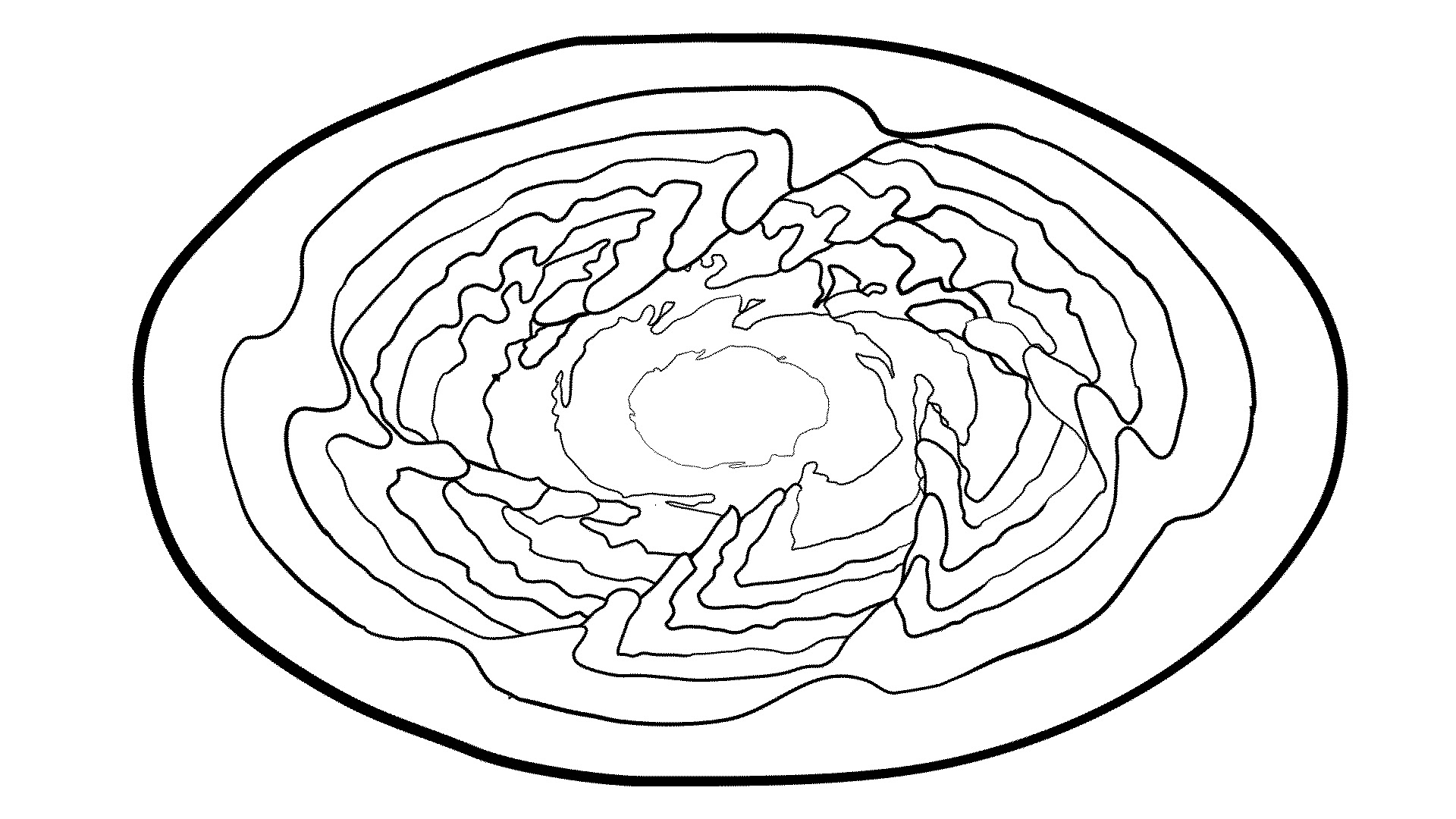
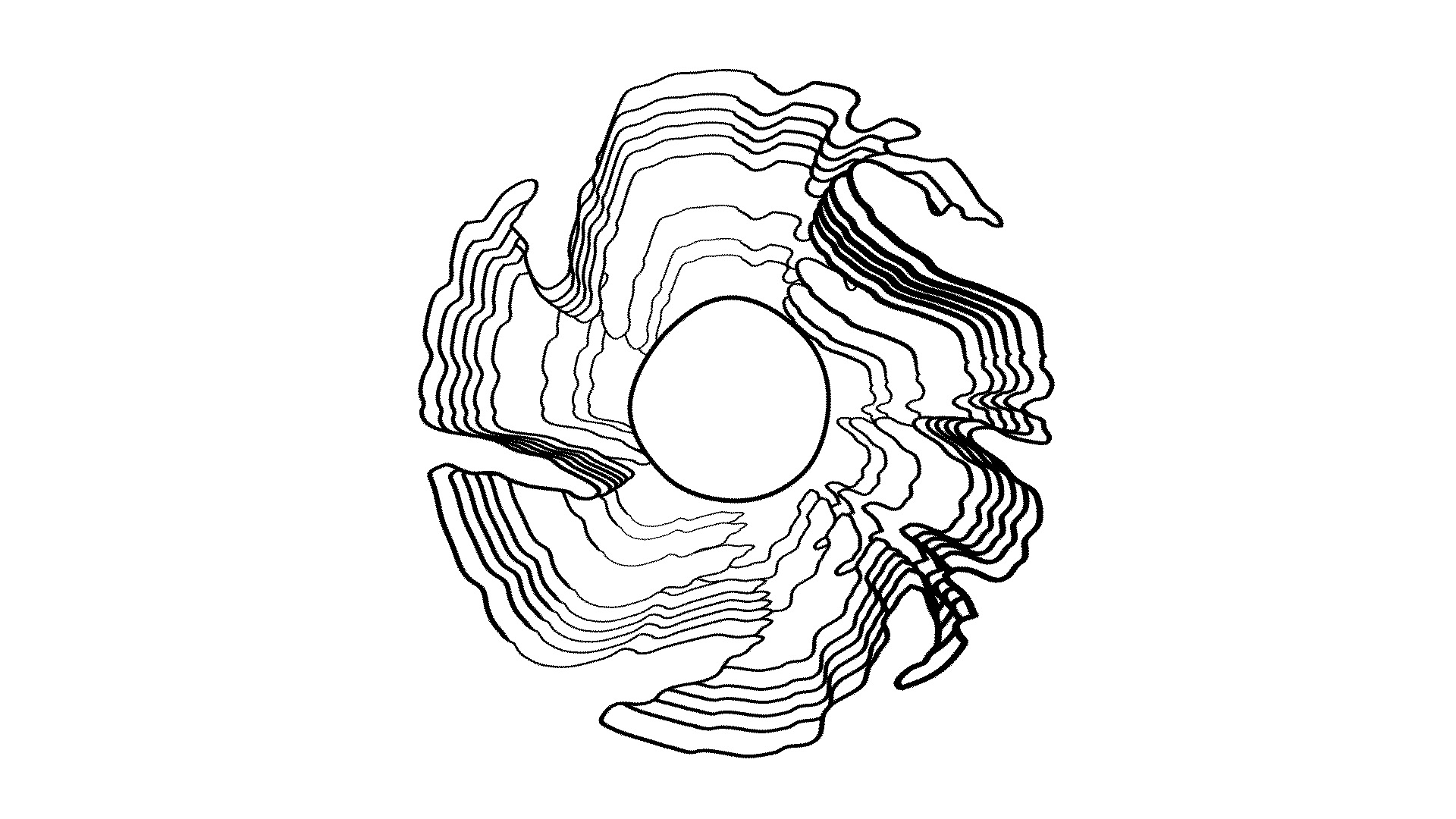
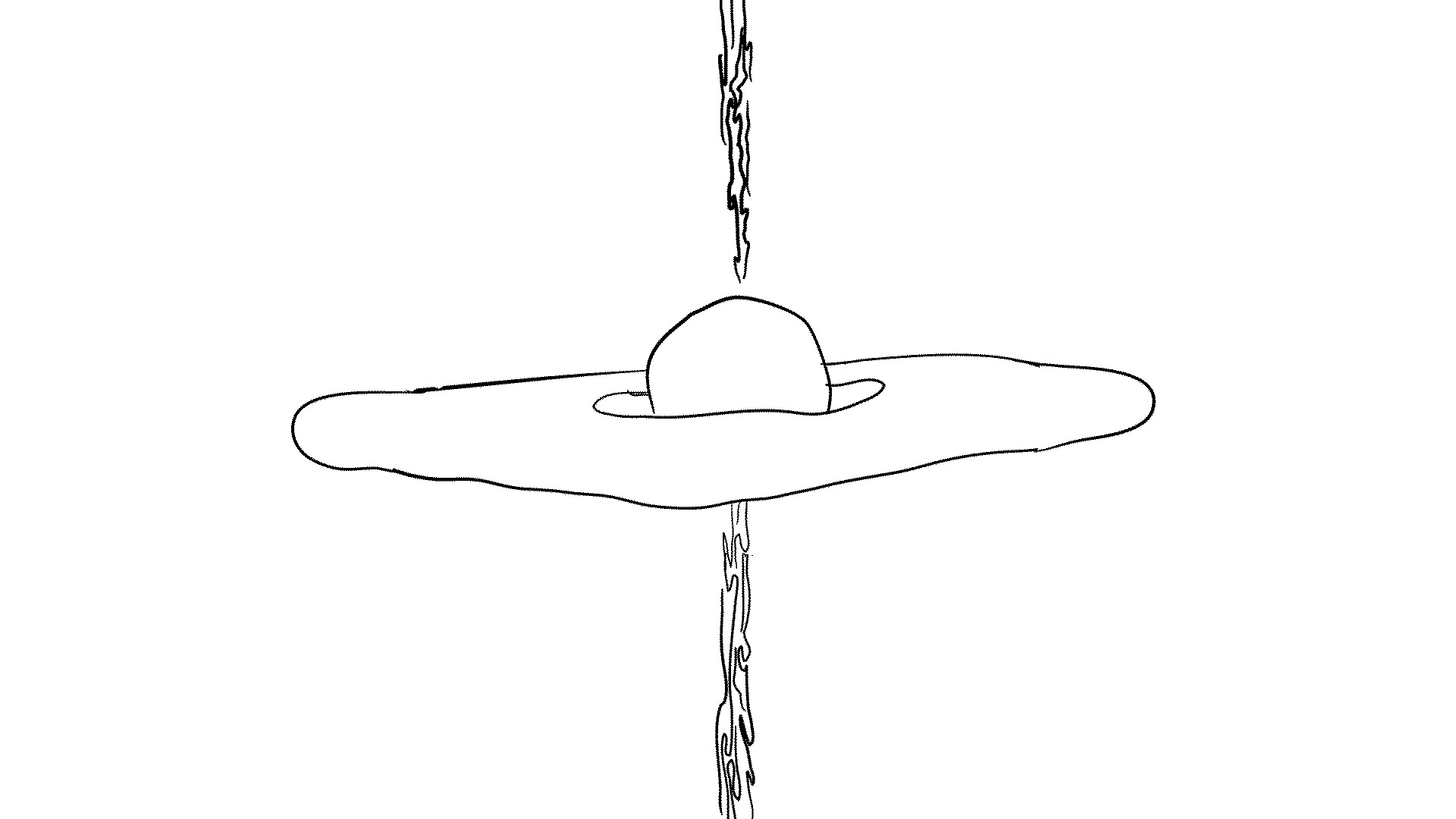




Birth, once more: the planet makes itself so grand that soon all the other rocky asteroids race towards it, feeding it the multitude substances brewed throughout out the eons. They arrange themselves by weight, and soon the heavy center fashions an armor of lava and rock, and upon the exterior crust it wears the oceans, mixing the erupting lava with their waters in a broth that thickens into continents. And there, amidst the tectonic battery of the planet’s flesh, substance finds itself arranged into certain copulations, certain spherical orbs of fat which amidst the bubbling heat provide a shelter for polymers that extend themselves into longer and longer strings. Perhaps, one finds an arrangement special, and, whimsical, makes a twin, who in turn, in an excited dance, copies the last move to suddenly populate the chemical soup with equivalent filaments. They dance, they break, they bend, and some assume shapes which, in turn, facilitate the dancing. The music soars, as the tendency to duplicate becomes the norm, and soon the multitude of special shapes abound and the moves keep getting fancier. Big groups form, to guard those more delicate but energetic within cells. Some get bigger, some get smaller, swallowing each other in a competition to throw the biggest party.
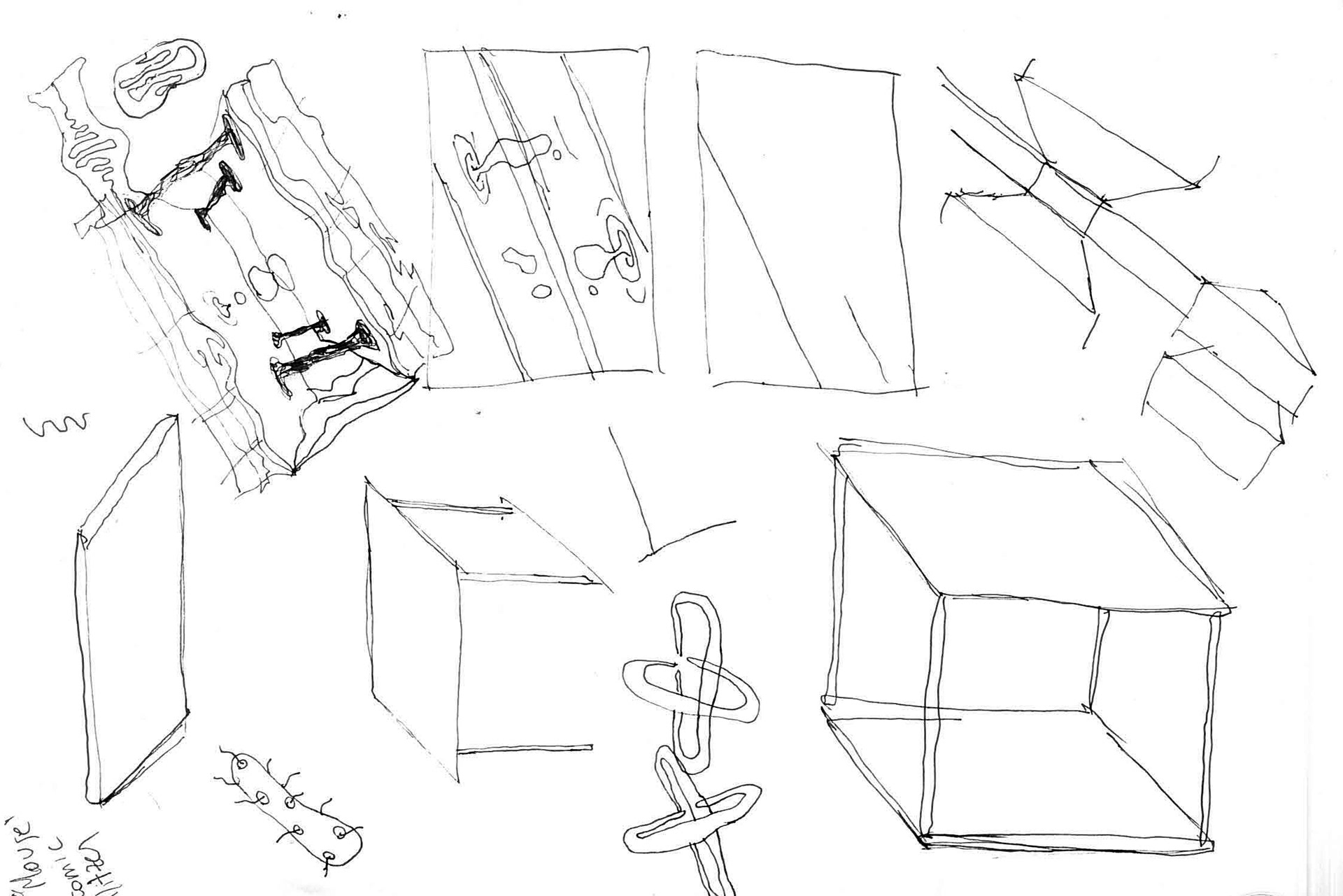

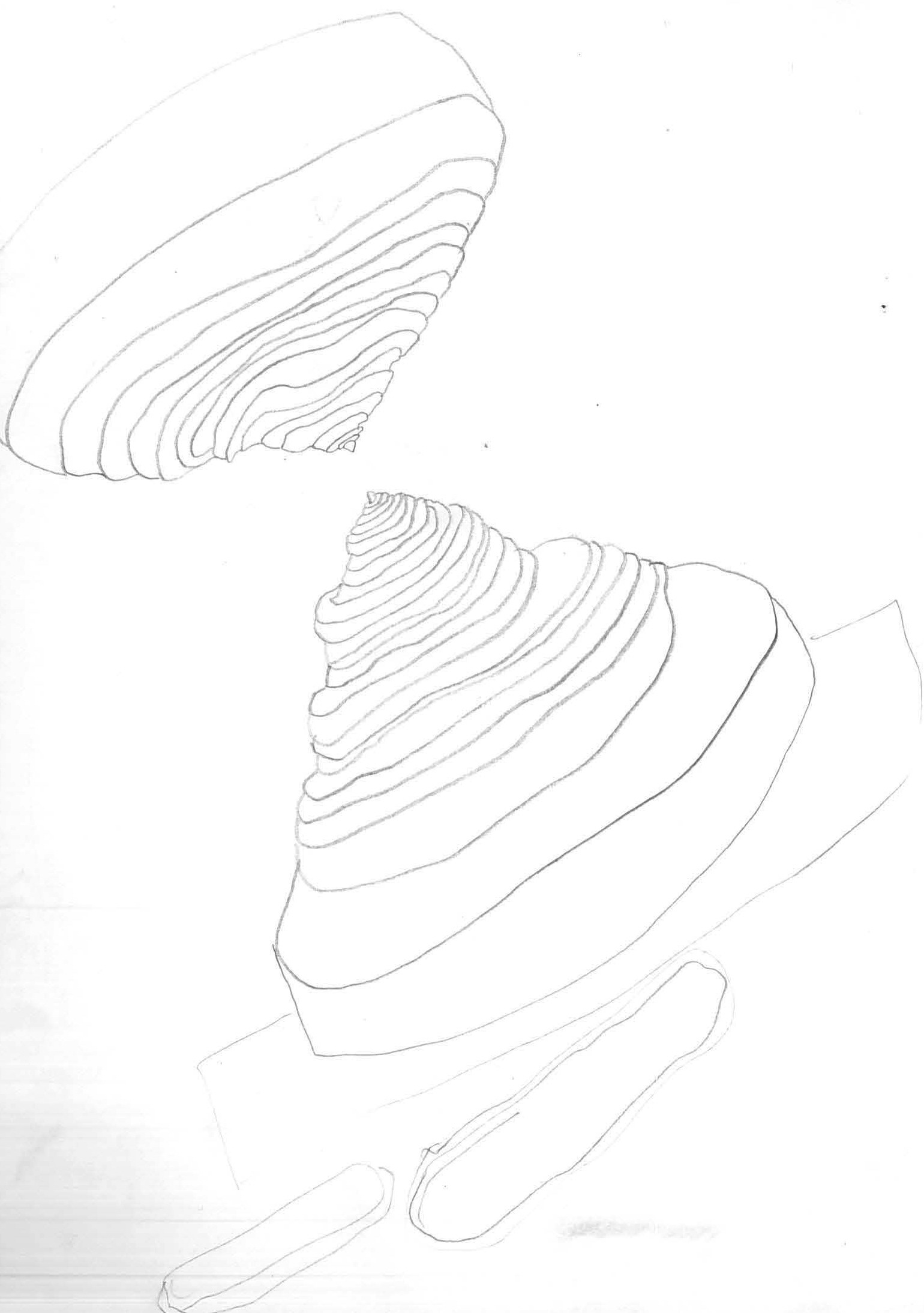

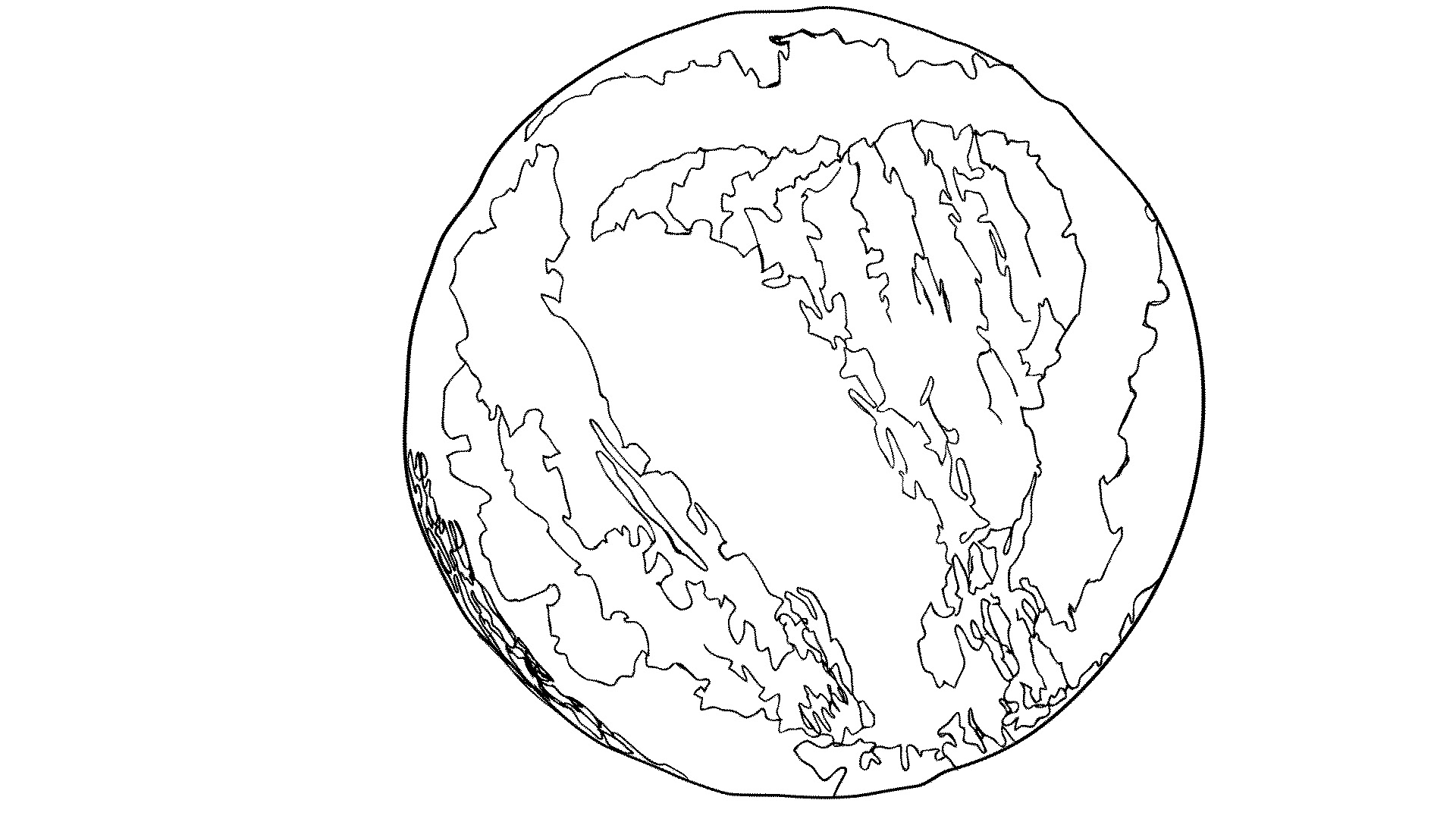


Evolution, the greatest celebration of them all. All manners of forms are borne into the land, transforming its arid or frozen landscapes into one continuous blanket of pulsing life, everything eating everything in a rapturous celebration of transformation. Nothing lasts, nothing stays, and life feeds itself all the rotten husks of generations rendered futile by the sweeping changes. And there, amidst the ravenous orgy, we suddenly find ourselves: looking around, aghast, writing poems and making drawings, to show the eyes in front of us the spectacle, the breathtaking breath within our tree-like lungs, the filaments of neurons thinking galaxies of sudden bliss, our vision comprehending all the visions as the eye opens, as I open into the awe.

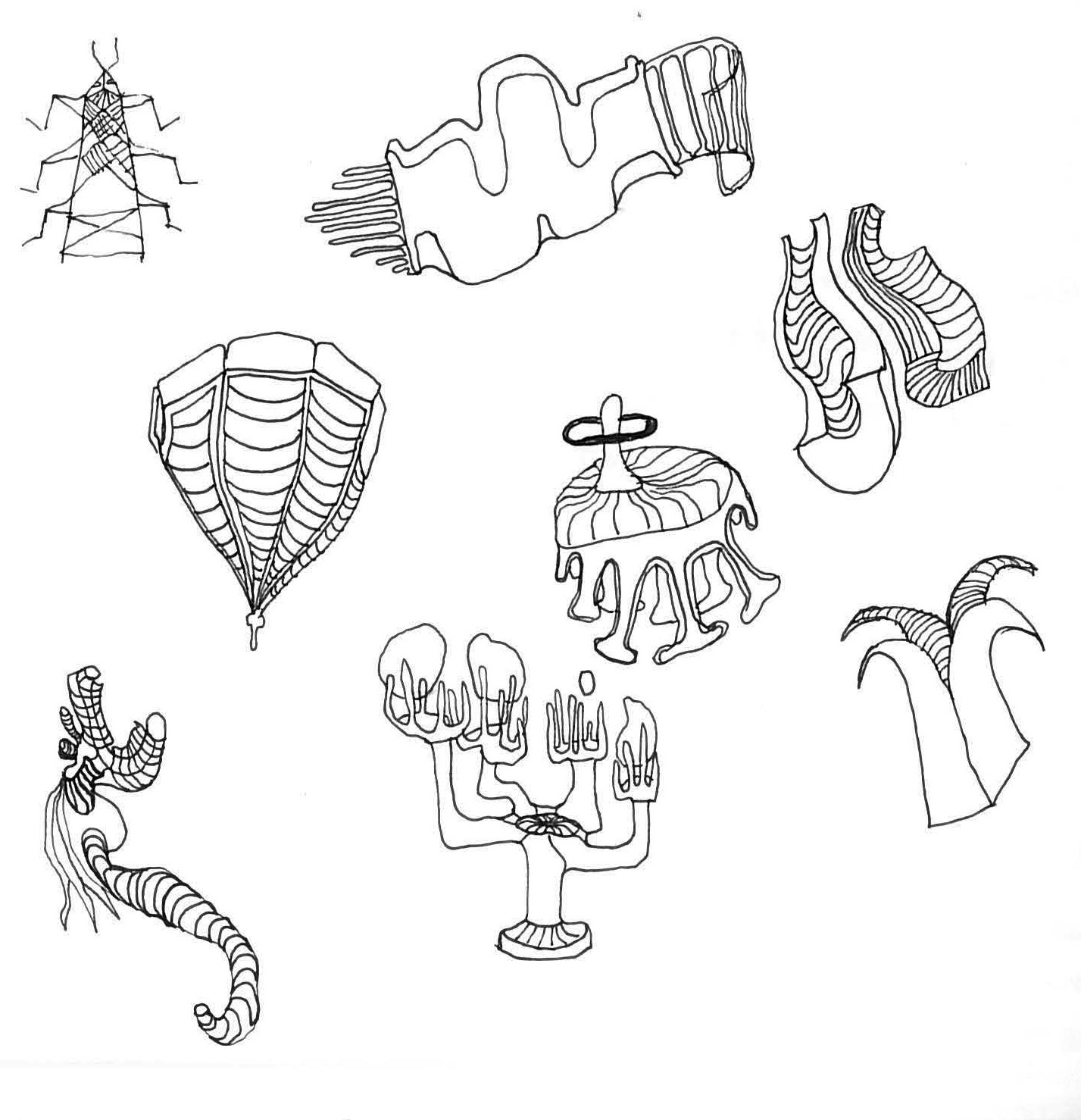

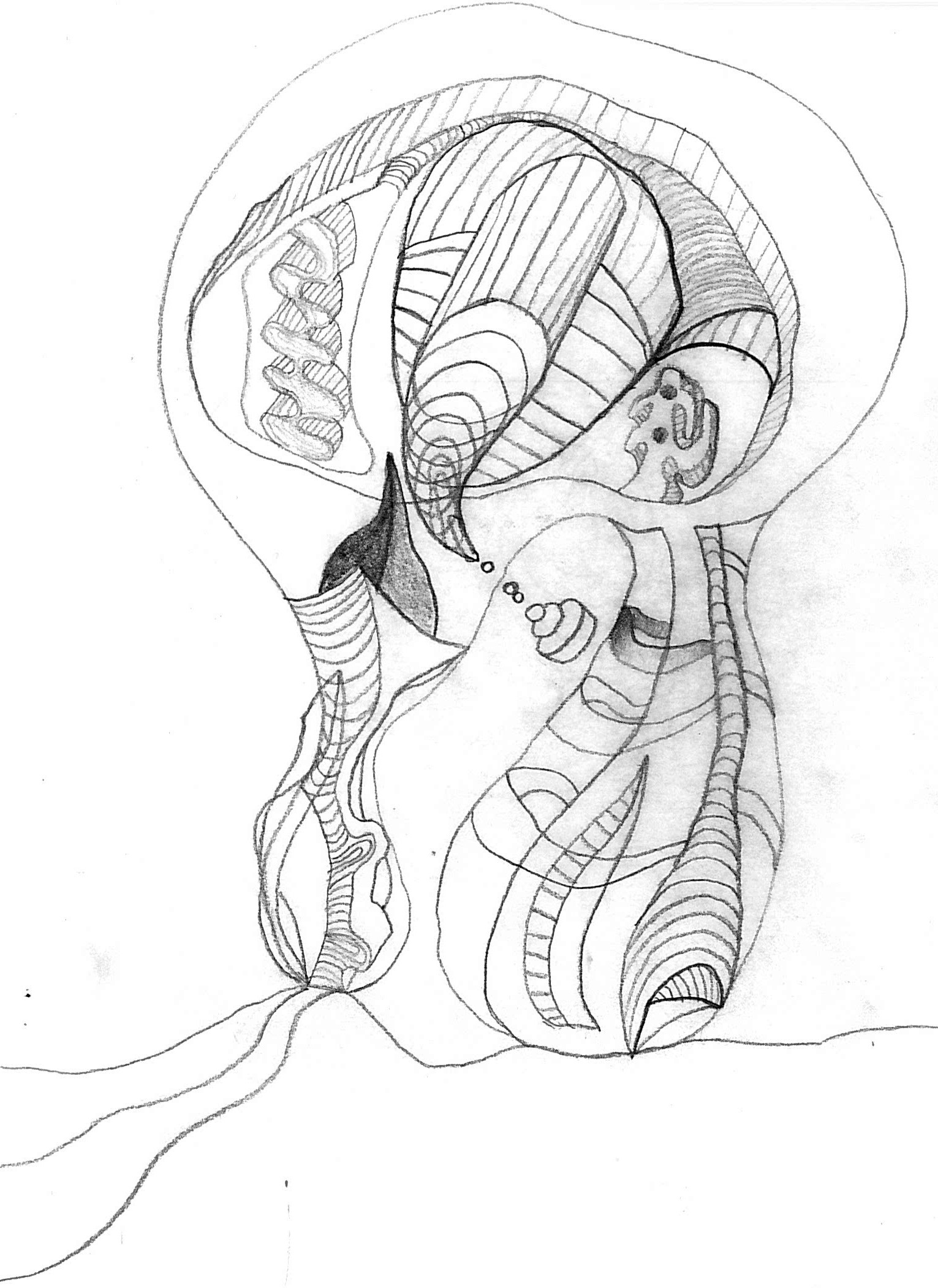
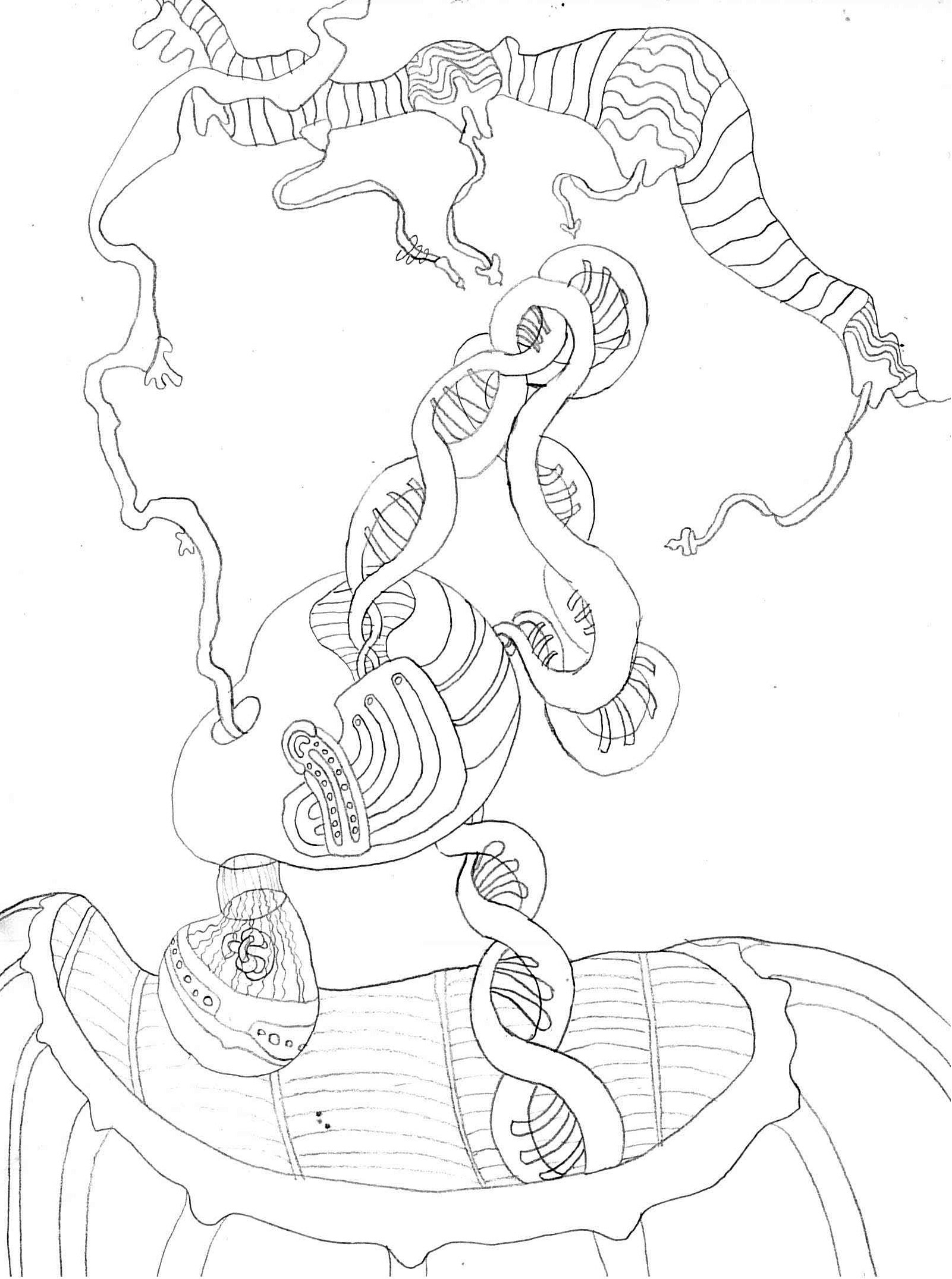


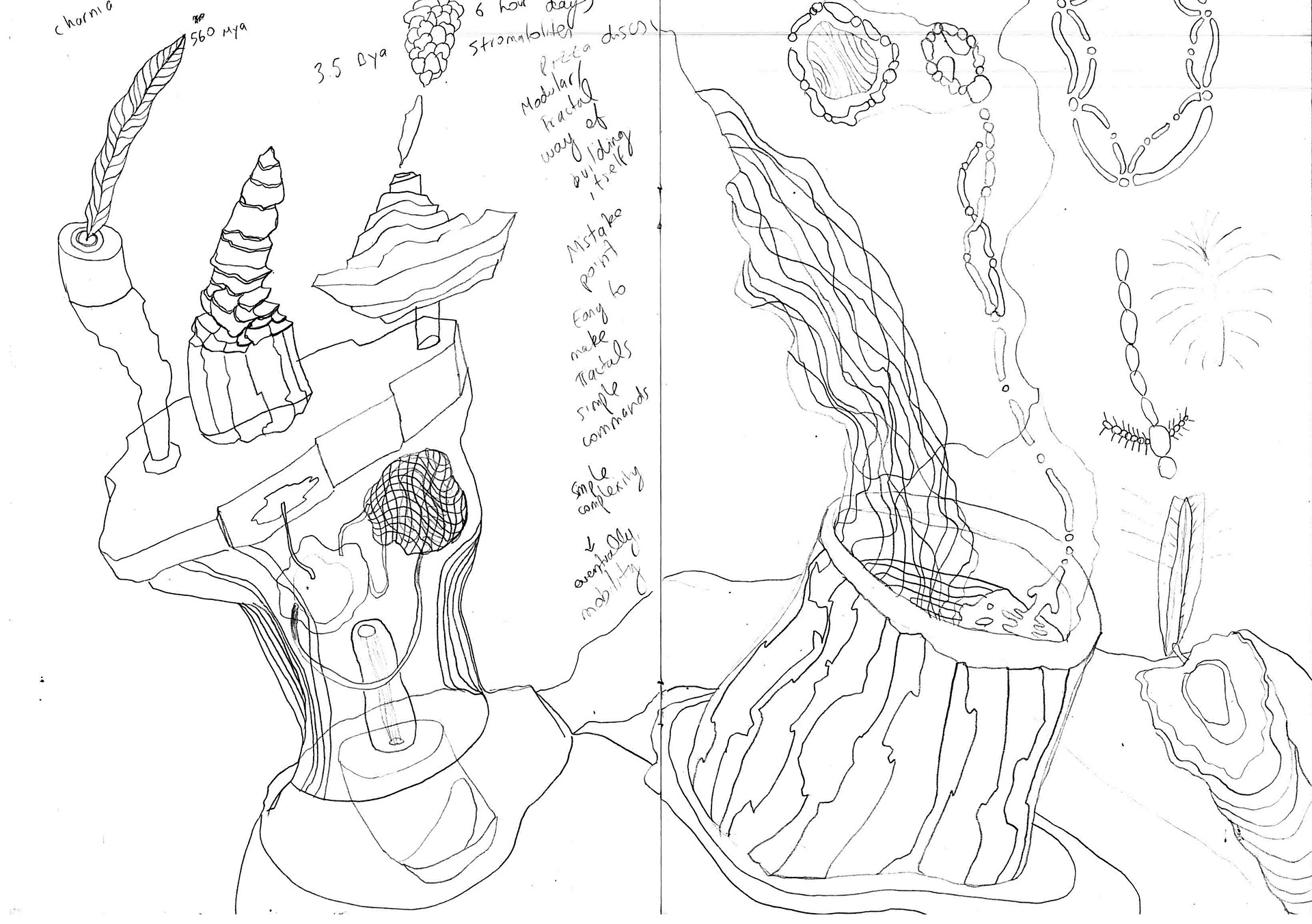

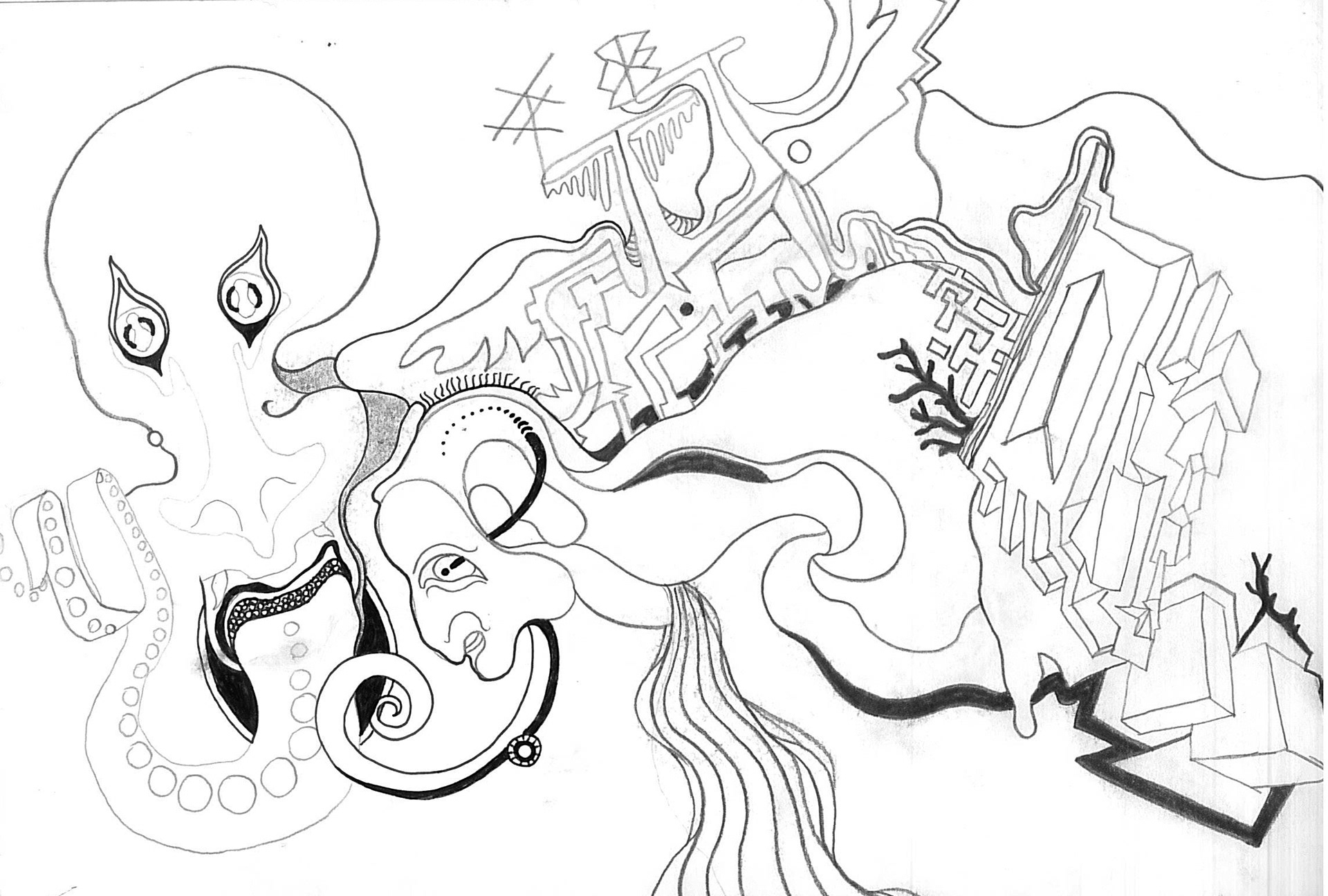
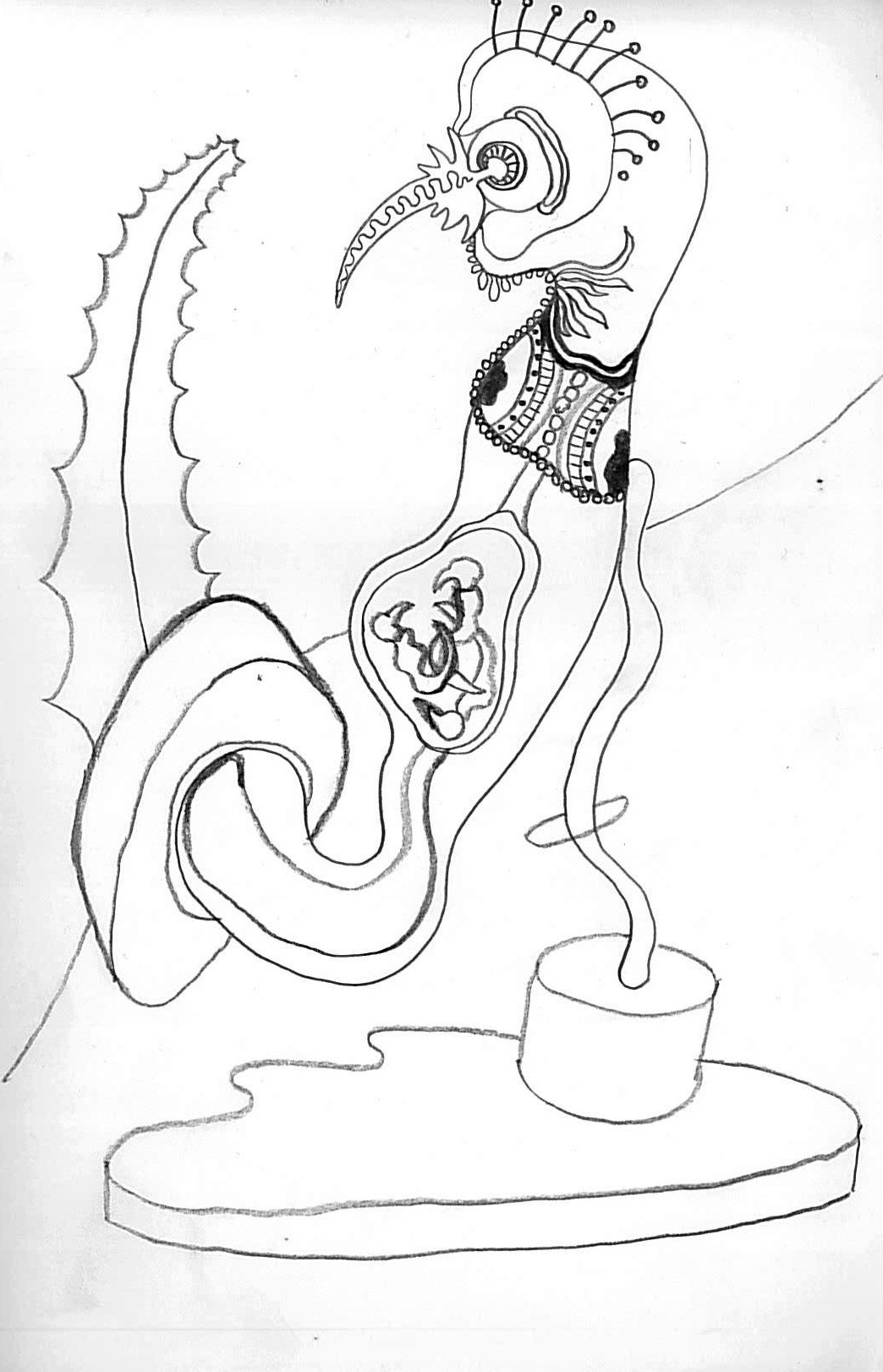
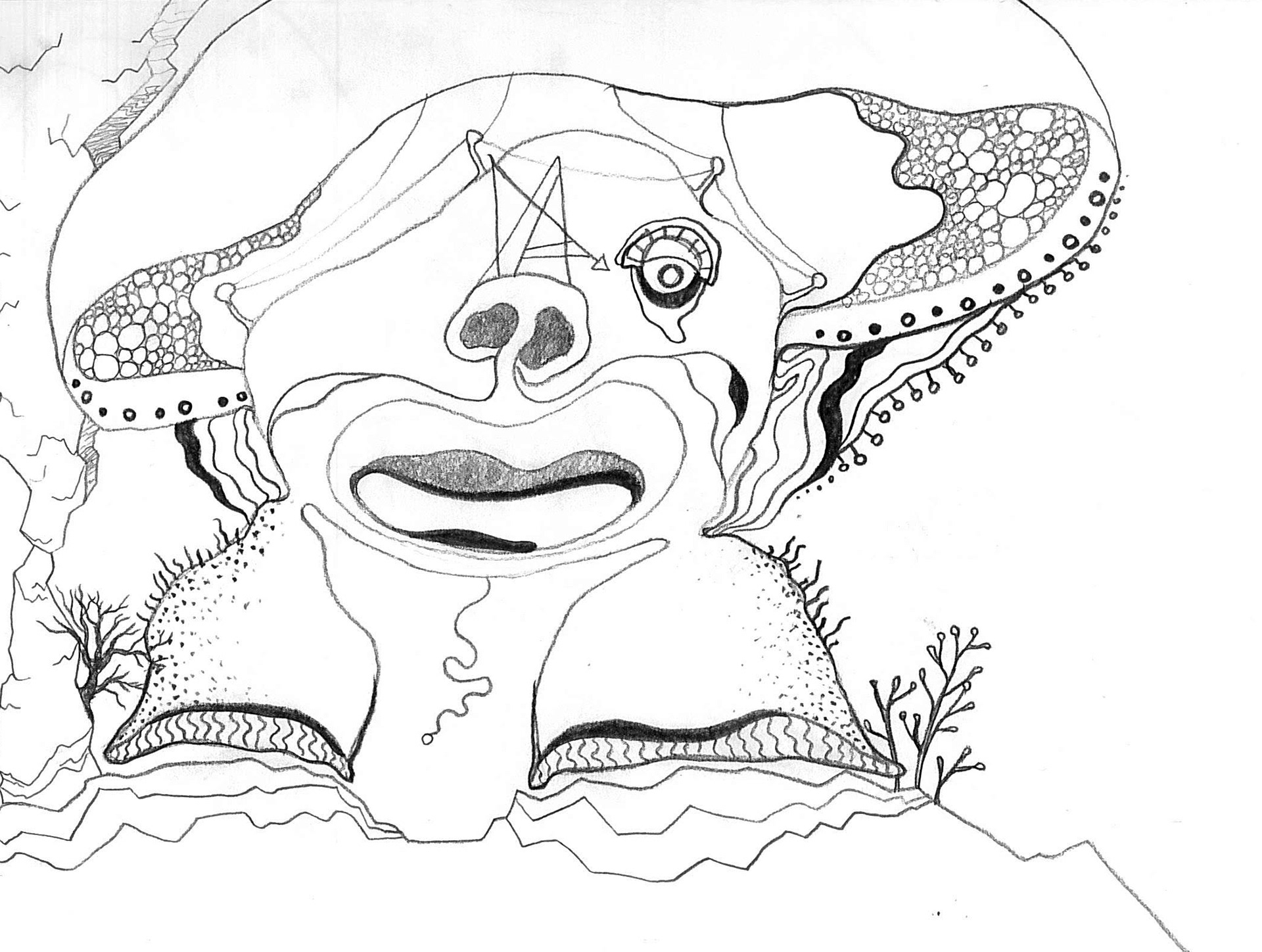

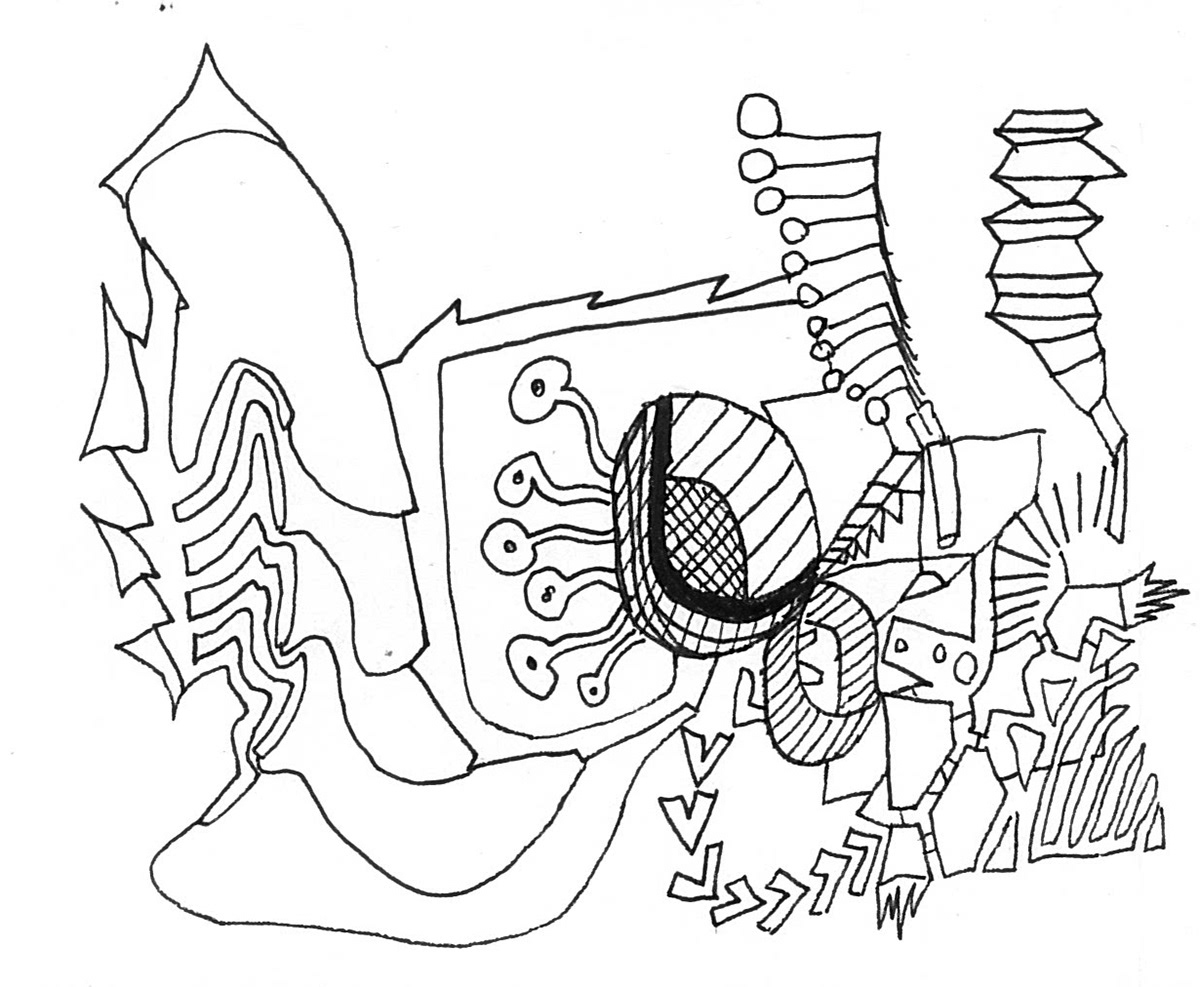

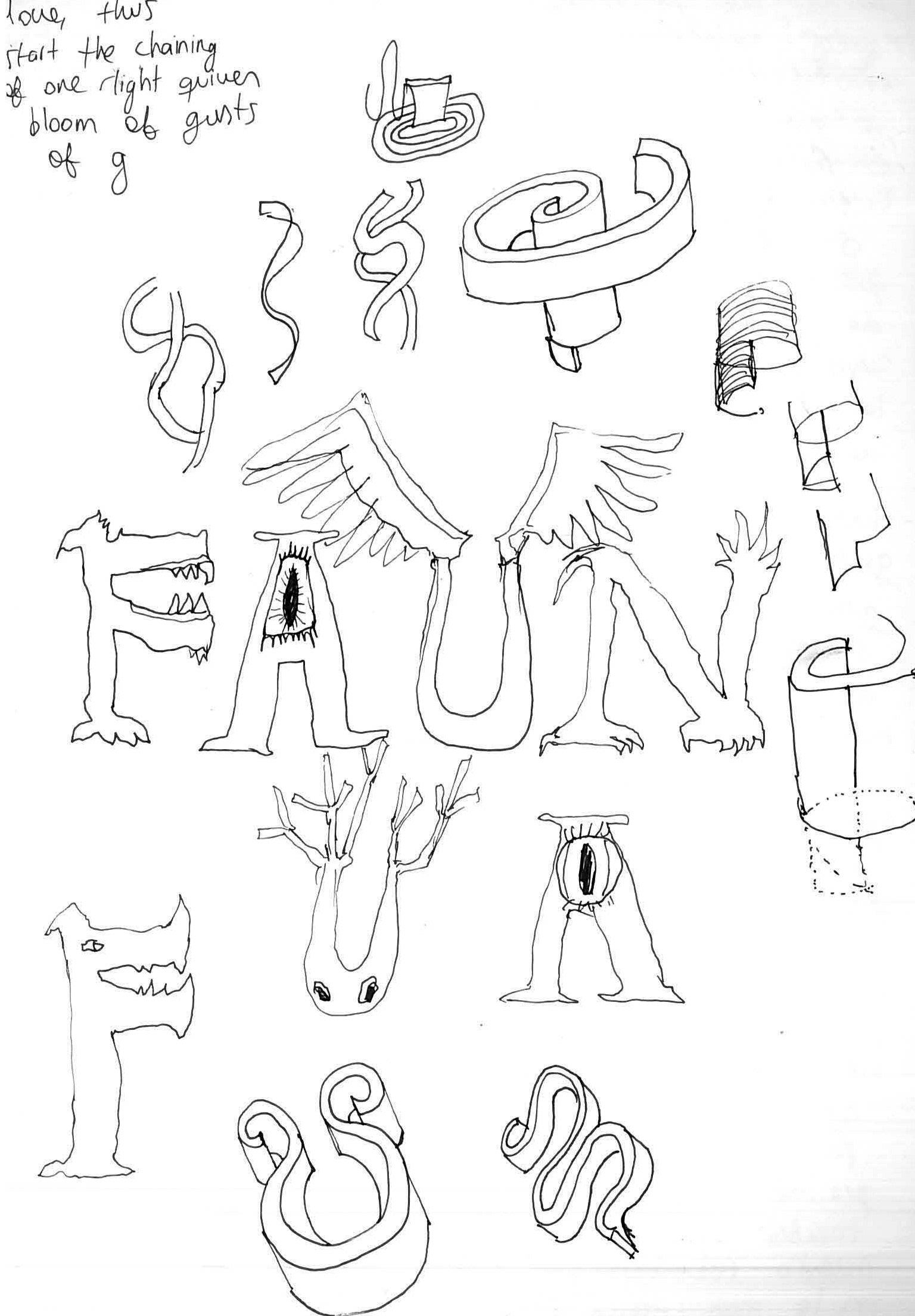
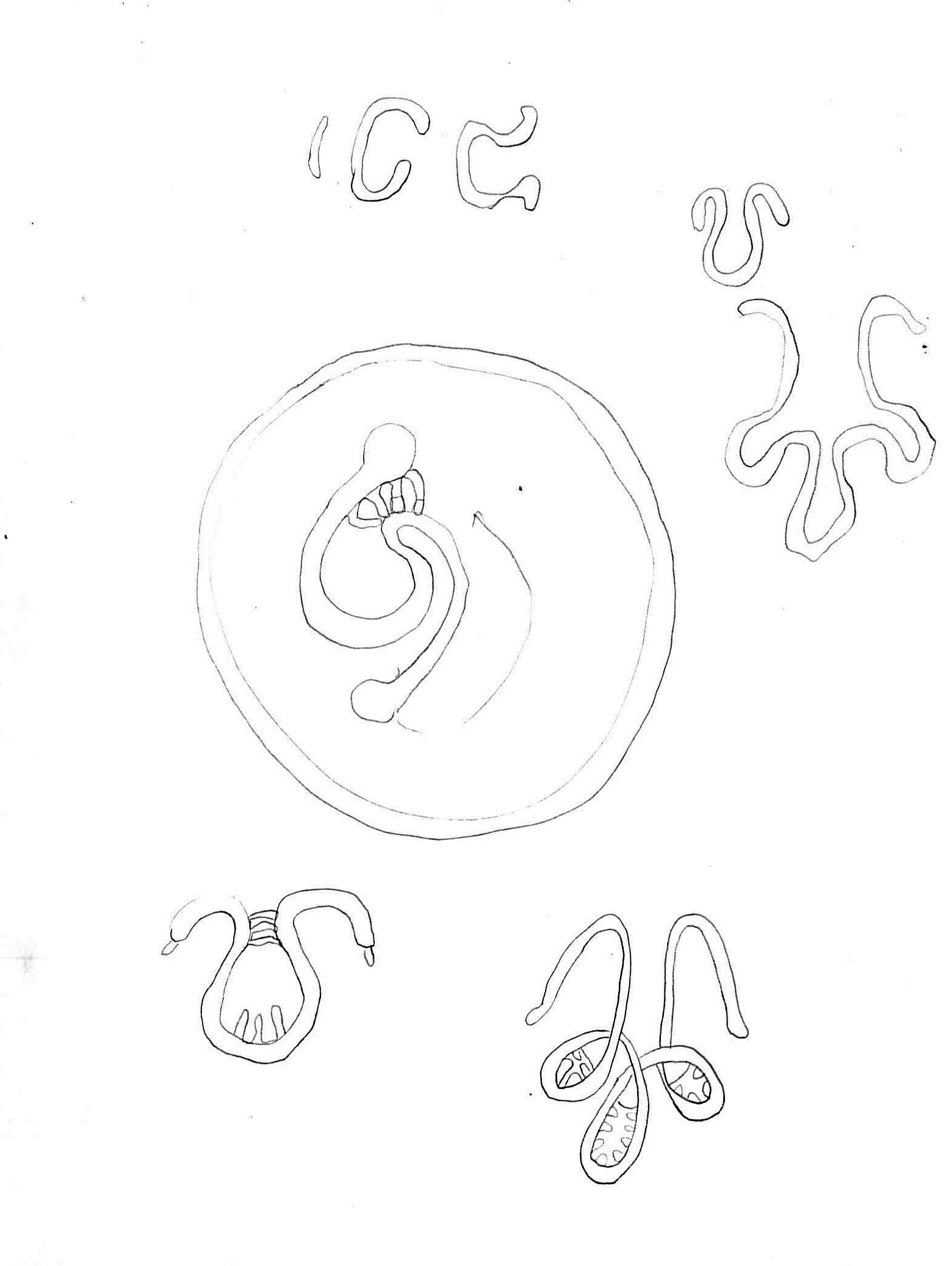

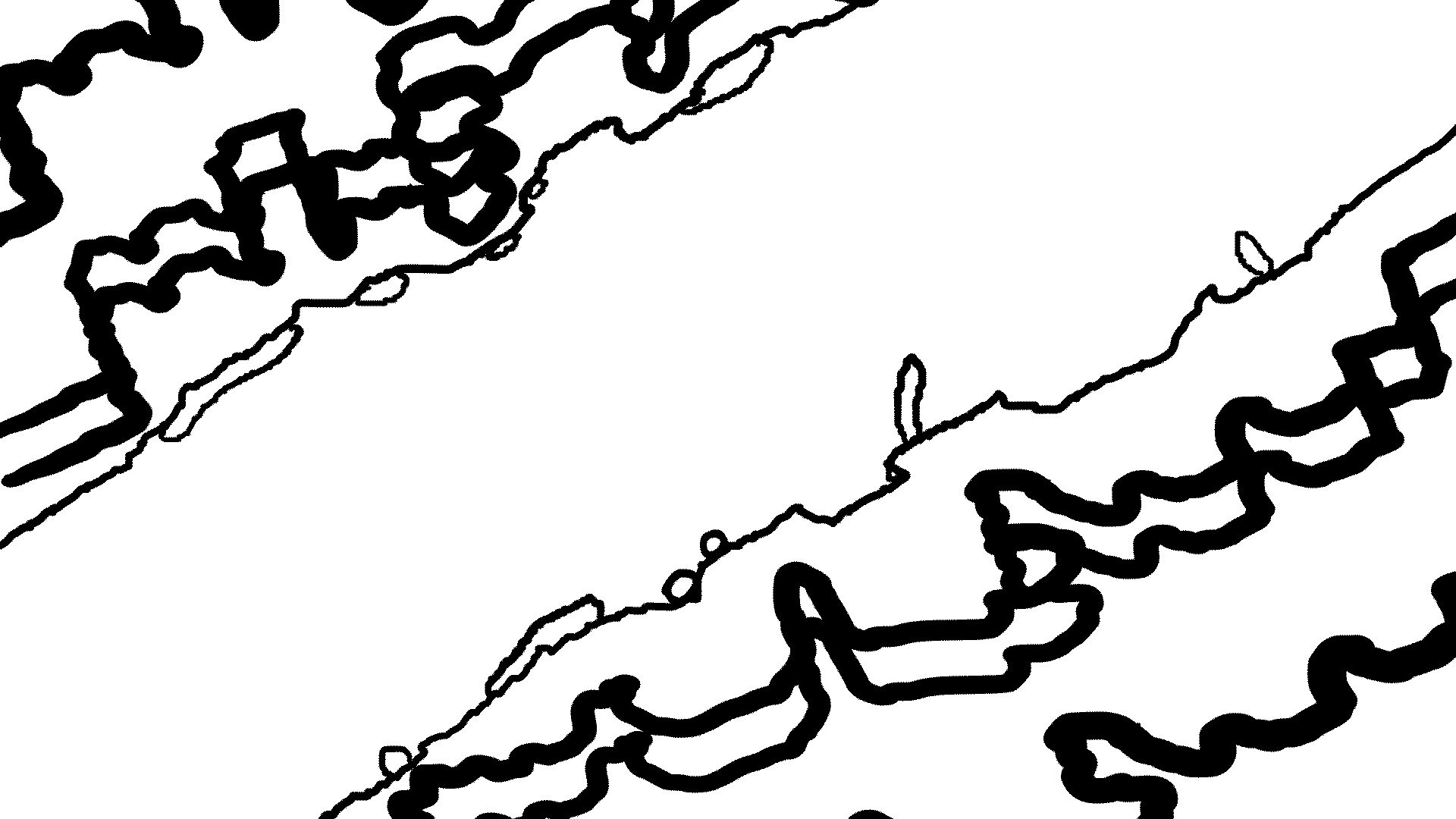

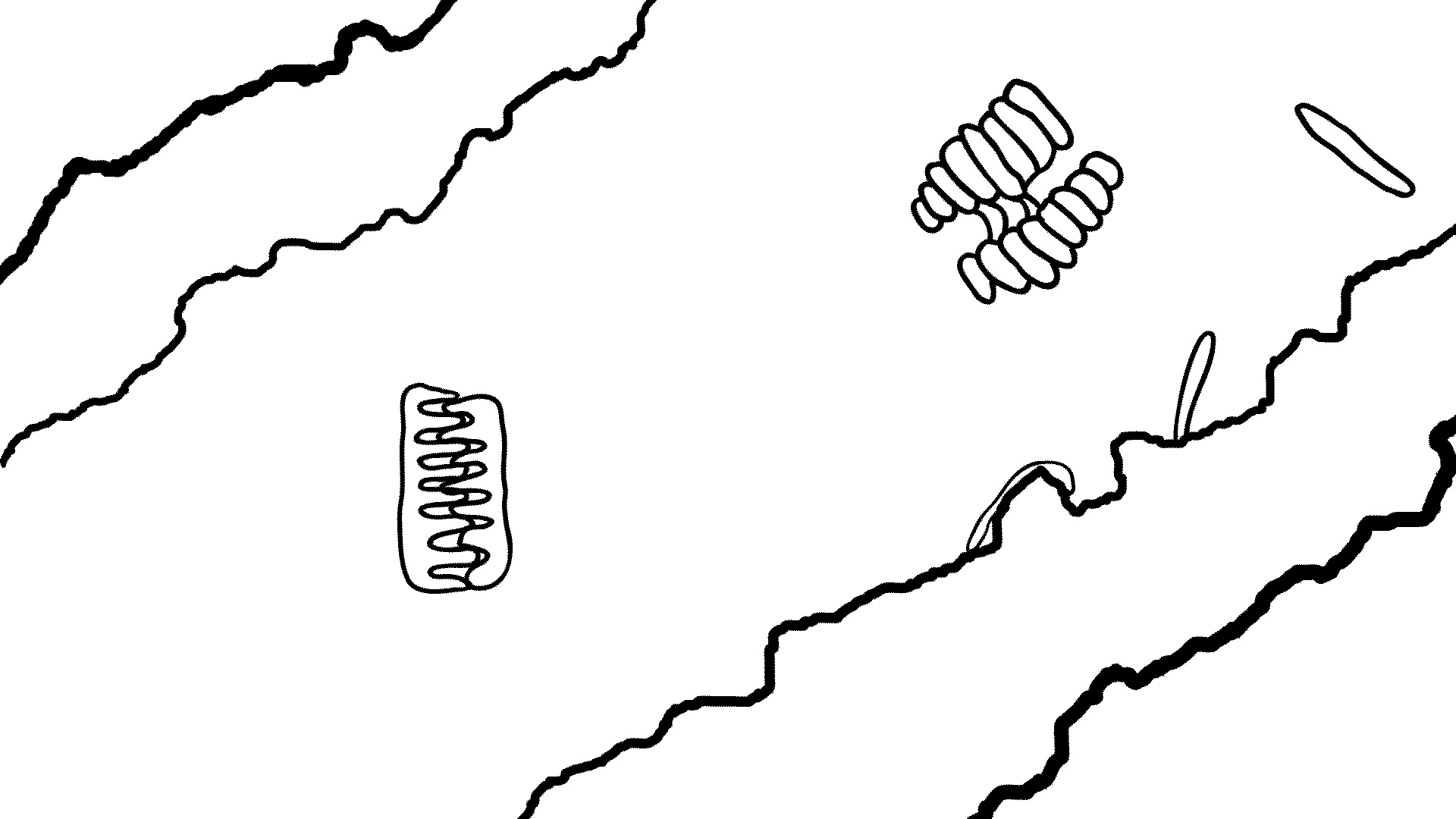


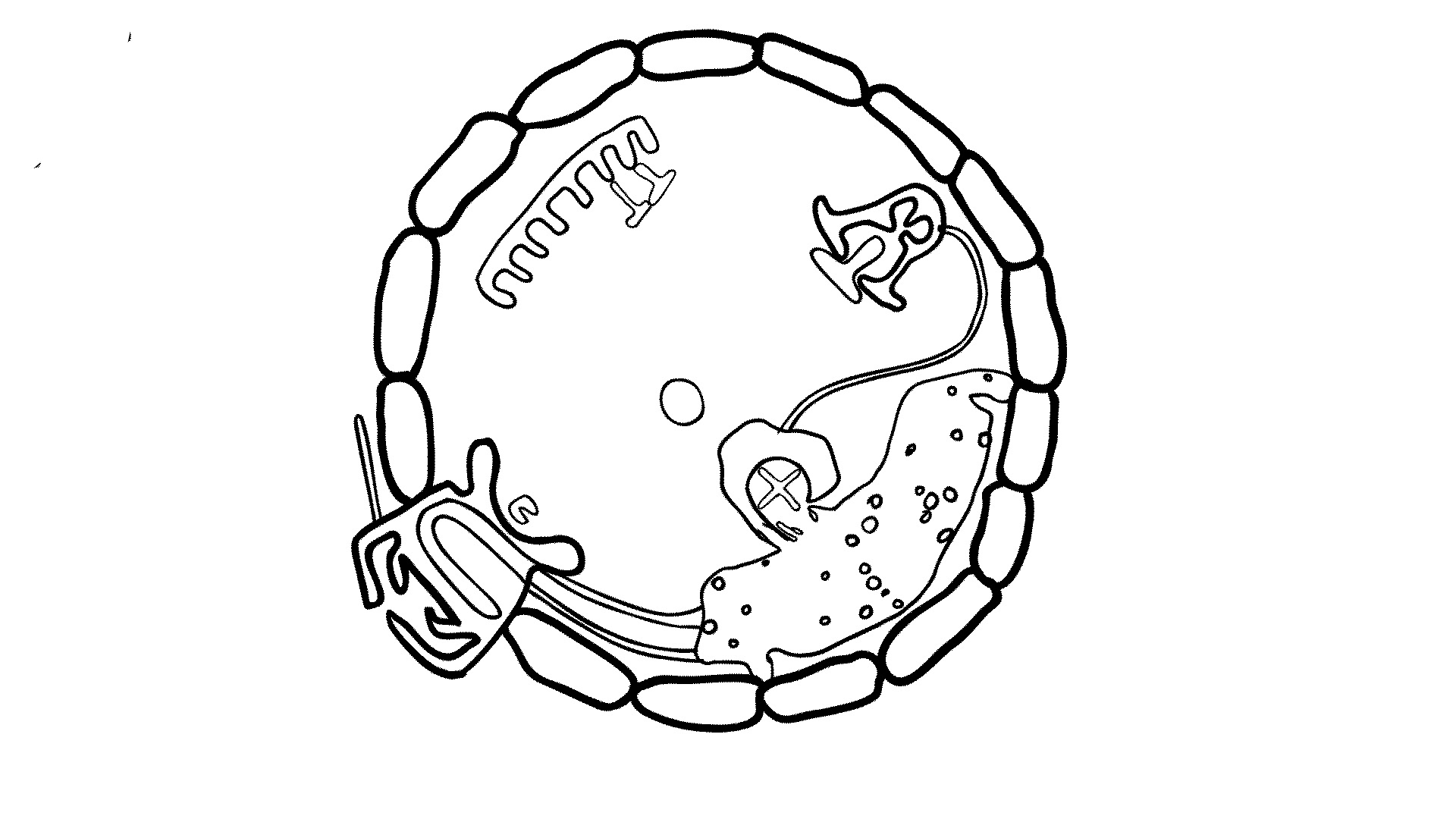


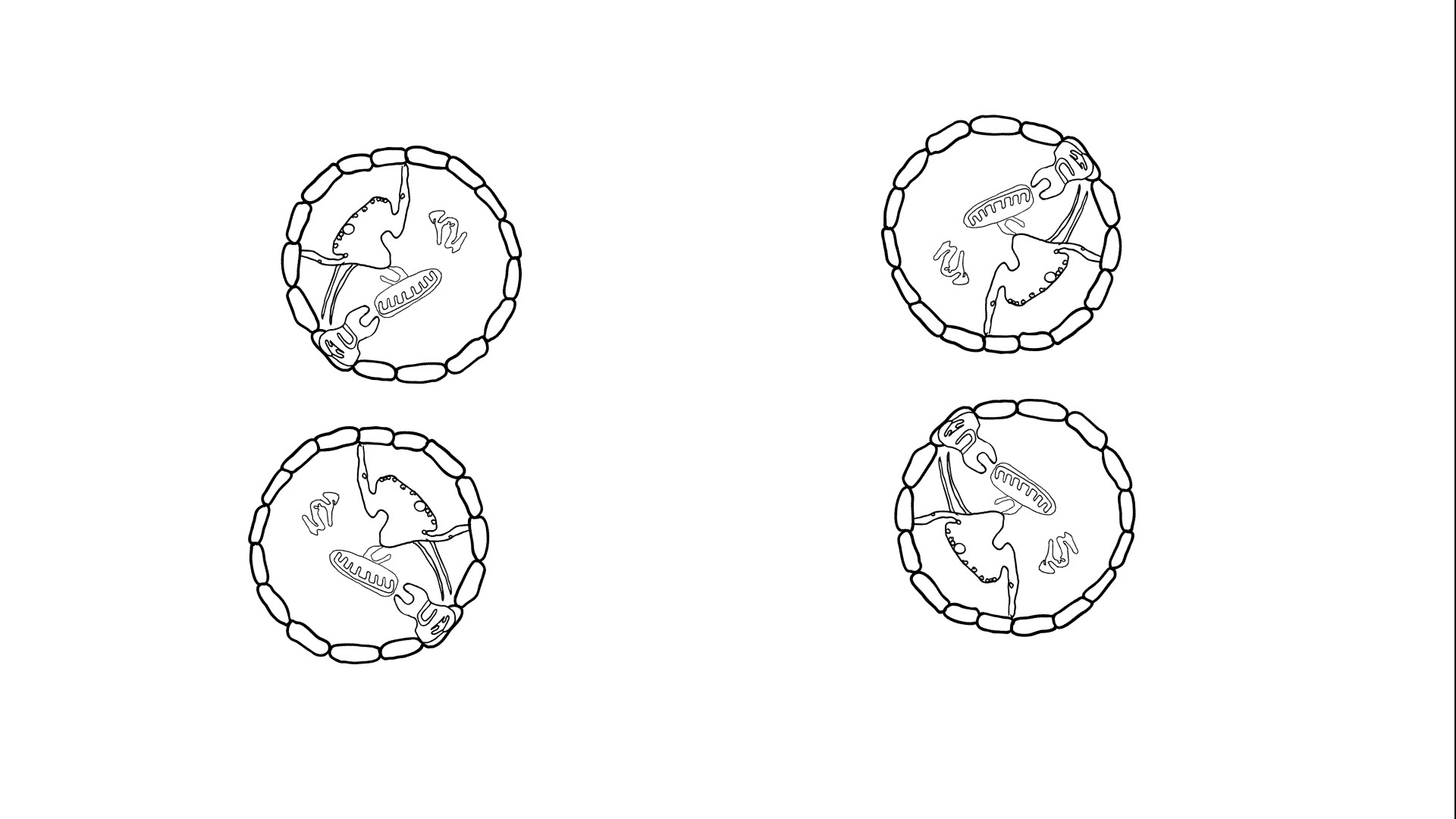




For a broad collection of reference images, follow this Pinterest link:
The film "Movement, One" consists of a single shot: from an initial opening image, it fluidly zooms into the each sequential section, like a continuous fractal. After opening with an Eye, symbolic of the subjective viewer which is relative to everything else in reality. The film continues with an image of Tree, archetypical of directed growth and evolution. Then, a fractal flower blooms which weaves its tendrils into a single point, symbolizing the moment of fertility, beauty, and expansion when the universe began.
At this stage, the narrative arc begins to illustrate ideas and concepts that current scientific theories propose about the origin of the universe. From a single, specific point, where the pistils of the flower meet, the Big Bang gives rise to the entirety of the known universe. This is often represented by a cone that grows in the specific direction of time, setting in action an unimaginably complex yet elegant sequence of events which result in the creation of everything we know. From a formless mass of subatomic particle, the elementary atoms of the universe begin to take shape. They expand unfathomably quickly, filling up the entirety of space with particles that eventually bind into a gaseous form. From a chaotic, highly energetic, formless mass of matter and anti-matter, a subtle shape appears. Electrons, protons and neutrons begin to unite into atoms. This rich mix of excitable elements then establishes into neuron-like filaments which then spread into the vacuum, establishing into the enormous cosmic structures known as superclusters. These are webs of normal, visible matter, as well mysterious entities known as dark matter and dark energy, both invisible aspects of the cosmos that give it its specific shape. The gas these are made of then begins to coalesce around gravitational irregularities that the initial bang generated, forming denser and denser clouds where the pull is even slightly stronger, in a cycle of mass pulling more mass towards it, until the sheer energy accumlated ignites, giving rise to the atomic fusion systems that are stars. These grow throughout millions of years, absorbing the gas around them, when they reach a point where the mass is greater than the gravity containing it, and the explode in supernovas, spreading the denser elements within around the universe. In the center, black holes are formed, points of such immense gravity that not even light can escape. They voraciously swallow everything around them, creating the distinct shapes of galaxies we can observe. Within these galaxies, like our own Milky Way, the pull of stars causes the gas clouds to amalgamate into small rocks, which join with each other, until they become enormous asteroids and, eventually planets, like our own. Heavier elements, like iron, sink to the center of the sphere, while lighter ones arrange themselves on the outer crust. Volcanoes spout heated magma on the land, and the tectonic plaques begin to form the geological structure of the Earth.
Eventually, some of these planets (at least one we know of – Earth) form liquid layers atop their surface, irrigated by icy asteroids that slowly yet surely fill it with enormous oceans. Then, in one of the greatest mysteries, a specific sequence of events has given rise to life. Theories are varied and contradictory: in the latest literature, the strongest hypothesis is that a variety of events happened simultaneously. Inside the highly energetic soup of deep sea vents, volcanic pits or inter-plaque crevasses, the chemical soup begins to form fatty acids, long chains of molecules that, because of their physical characteristics, tend to coalesce into spherical orbs, like those one can observe when pouring oil into water. These balls of acid have a highly dynamic surface, constantly exchanging molecules with the external liquid medium. In this process, they can come to swallow different polymers, complex, elongated molecules which, under certain conditions, can display a behavior which is the key point of the origin of life: they begin to duplicate. Thanks to their unique structure, these chains of molecules can use stray particles around them known as nucleotides, to make an exact copy of themselves, which then divides and is thus capable of further copies. Inside the fatty bubbles, this process can continue undeterred, and quickly longer and more complicated chains are formed. Some of these chains tend to fold upon themselves, joining different sections of their strands into fascinating shapes, which, because of their physical properties, have the capacity of affecting their surroundings. Some are capable of utilizing complex chemical processes, such as the citric acid cycle, to wield energy, and use this energy for complex functions that increase the efficiency of the duplicating cycles. Soon the fatty spheres resemble modern cells: containers full of chemical machinery, capable of replicating, metabolizing, and, most importantly, storing information. The polymeric sequences are composed of a vocabulary of nucleotides. The different functions of the chains is encoded in the patterns of this vocabulary, which allows them to transfer information through time. This central fact is the key to evolution. As duplication happens, the process isn’t perfect, and accidental changes to the chain slowly modify it. Most changes are irrelevant, many are harmful, but a few are beneficial, allowing the chains to do new things or be more efficient at whatever they already did. This leads them to be better suited for surviving in their environments, which makes them more likely to duplicate. Thus, the sequence of evolution starts, transforming these simple chemical arrangements to become more and more sophisticated. Eventually, multi-cellular organisms become the norm, and soon the world is populated with creatures of all sizes and shapes. And thus, humans are born, and they give rise to the plethora technologies that have brought us to this age of language and communication: the age in which animations about the origin of humanity can be made.
This is a brief and general description of the singularly complex process that has brought us here. Researching it has been a fascinating endeavor, and many ideas and interpretations couldn’t make their way into the film. Combining this central arch with poetry, dance and animation has allowed me to make a piece in which the fractal, dynamic movement that this process reveals becomes evident, and, hopefully, inspire awe in the viewer. Awe at the unfathomable complexity that we are, as conscious beings in a life-bearing planet amidst the cosmos. In the end, I hope nothing more than to create a moment of pause and reflection of the audience, who might step out of the mundane routine to contemplate the sheer miraculous awesomeness that is being alive, here, and thus, go into life with a bit more gratefulness, joy and empathy for fellow creatures.
"Movement, One" will also be part of live performance in which the animation created during the course will interact with dancers. It will be projected, in a floor-to-wall screen, and in front of it dancers will move in relationship to the image and the music of the film. This interaction will create an appearance of a strong relationship between the movement on the screen and the movement of the dancers, establishing interesting relationships amongst the various rhythms, cycles and qualities of movement coexisting. The final film will loop, returning after the odyssey of creation to the first image of the eye, allowing it to be played numerous times seamlessly. The first pass of the animation will feature a shortened version, without any pauses, delicately accompanied by the mere sound effects. The performers will barely move, using Butoh dance style gestures, as they recite the poems that accompany the film. This first pass will give the animation the opportunity to be the protagonist, and to establish the conceptual ground which is the essence of the film. The second round consists of a longer version of the film, in which pauses permit more time for dancing. This version will have the music playing, to generate a much more dynamic, upbeat and rhythmical dance. The emphasis will be on the relationships between the interesting shapes and movements of the dancers and the animation. A final round will be similar to the second one, with even more energetic music and movement. This crescendo will end abruptly, as the opening eye closes, and the film ends. The design for this choreography will be finalized in the upcoming weeks, when the animation and the music are complete.
The piece I have handed in consists of a full cycle of the animation with music. The last scene, after the cell has been formed and begins replicating, will consist of the evolution of a blob-like shape until it becomes humanoid, at which point it zooms into its eye to start the cycle over. At the moment, I have included an animatic of the final scene, and will finish it before the degree show presentation, in which a longer, looping version of the film will be shown.